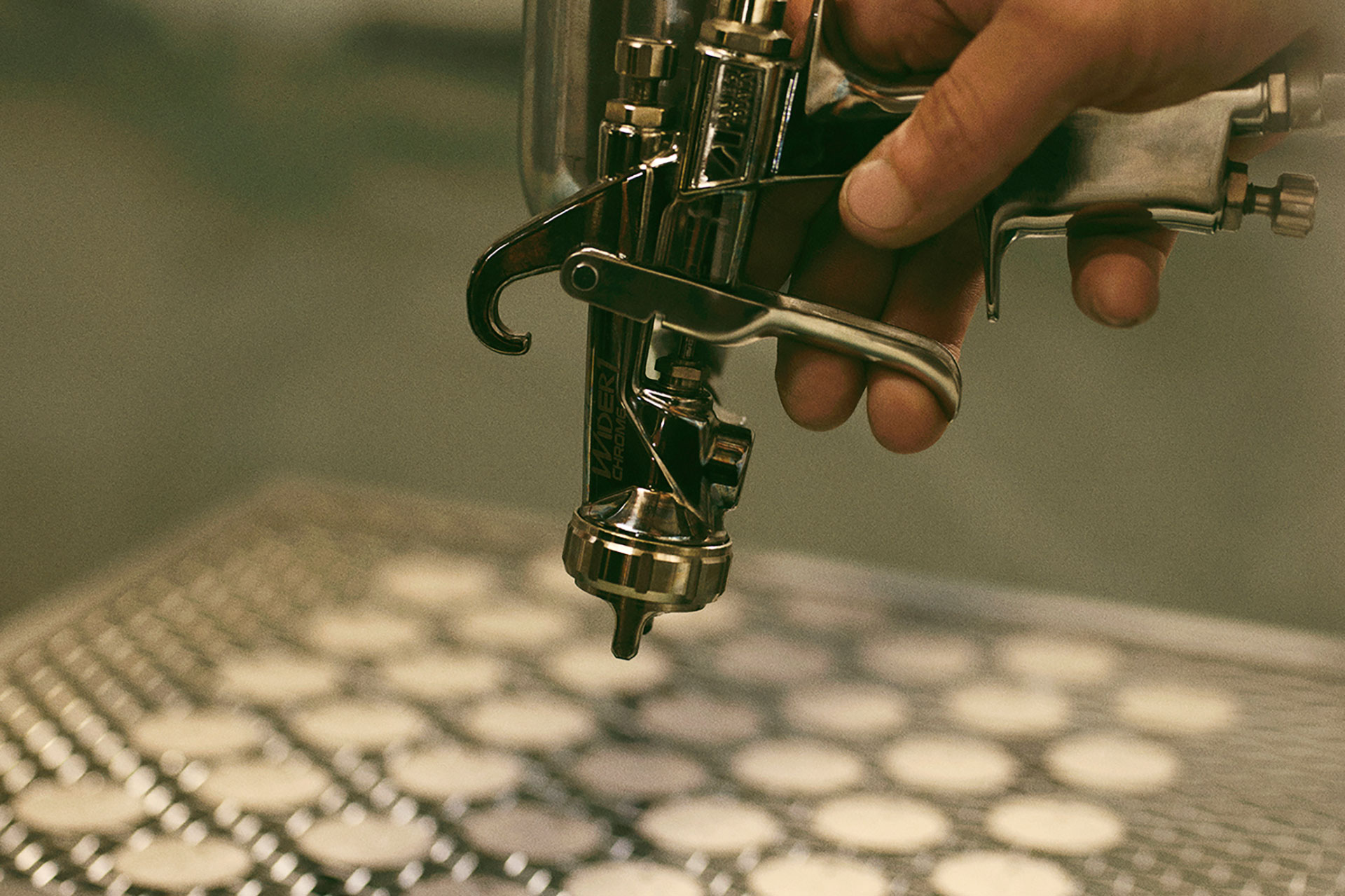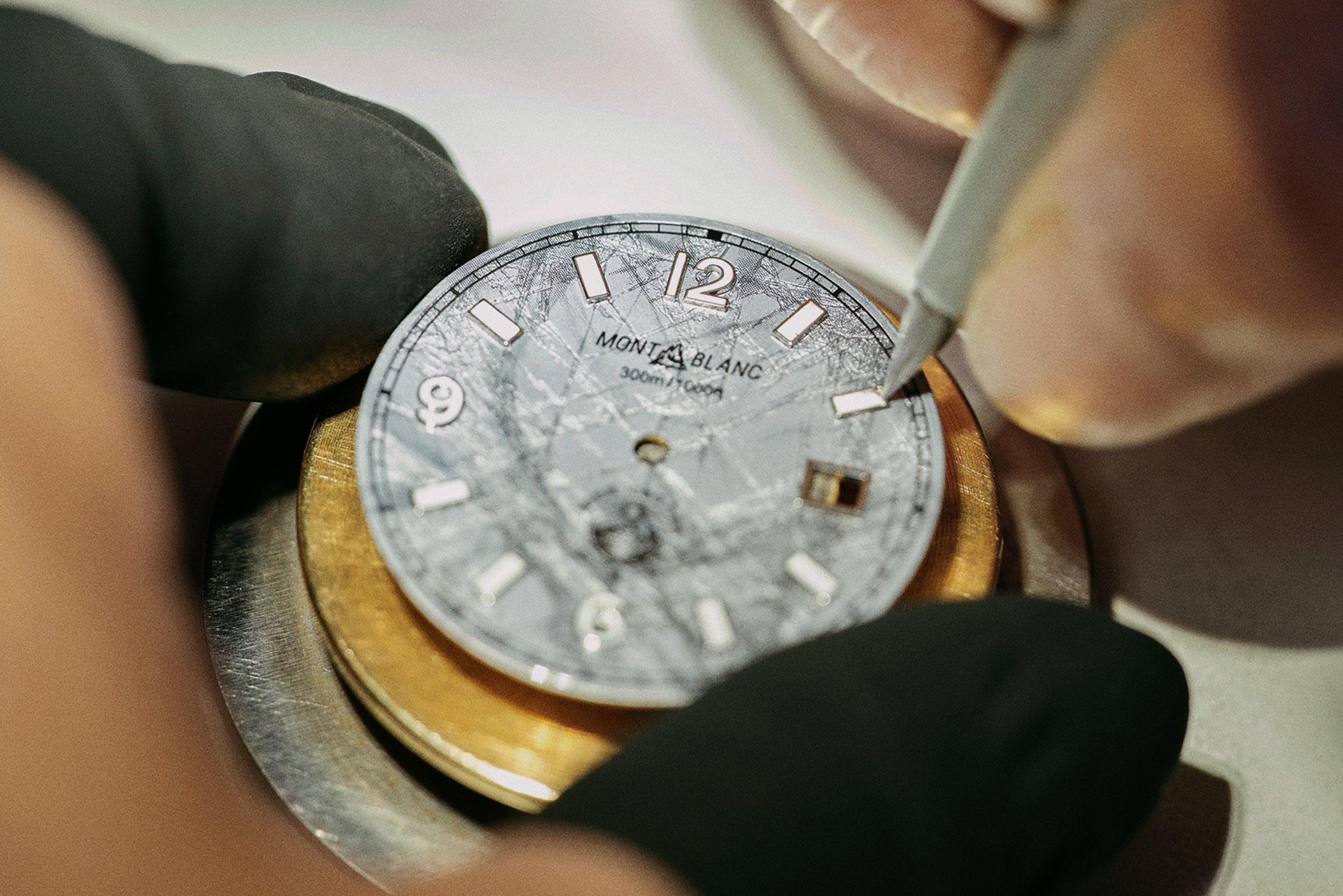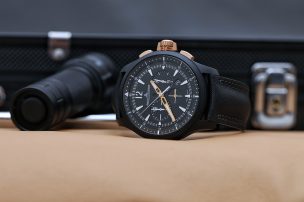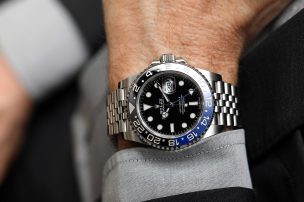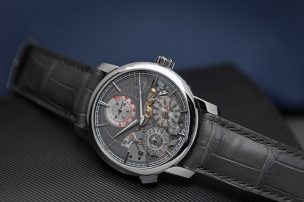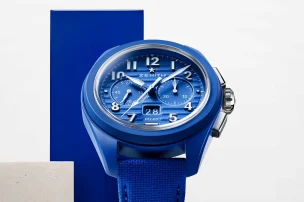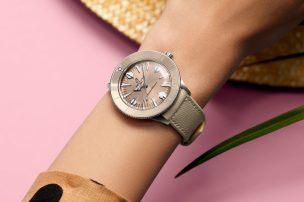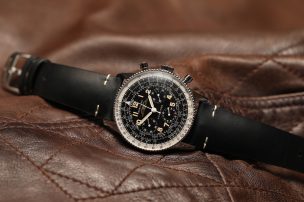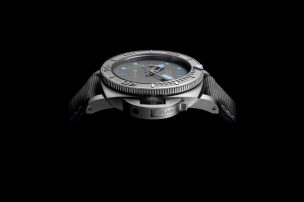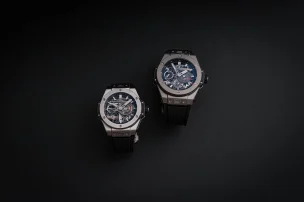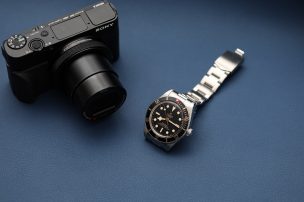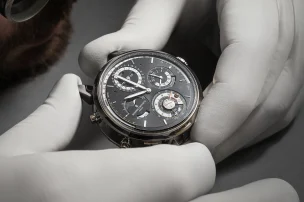
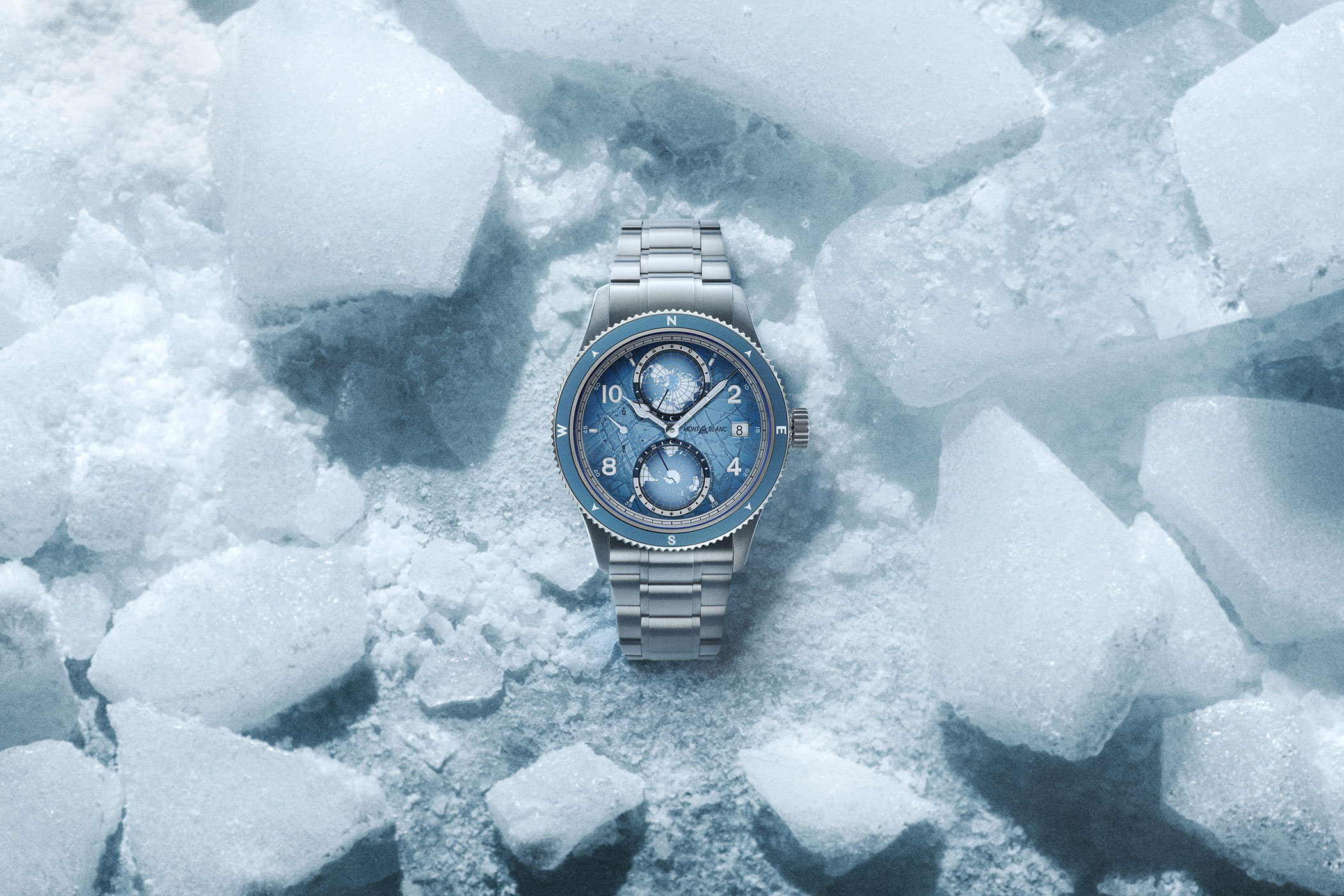
Montblanc Head of Watchmaking Laurent Lecamp’s Incredible Adventure Into The Ice
Here’s why Montblanc manufactures diver’s watches – and is proving more successful at doing so than ever before.
Behind every successful wristwatch, there tends to be a particular person advocating it. For over three years, the man behind Montblanc has been Laurent Lecamp. Paying a visit to him in Villeret proved to be a valuable lesson on what it means to remain innovative as a luxury brand.
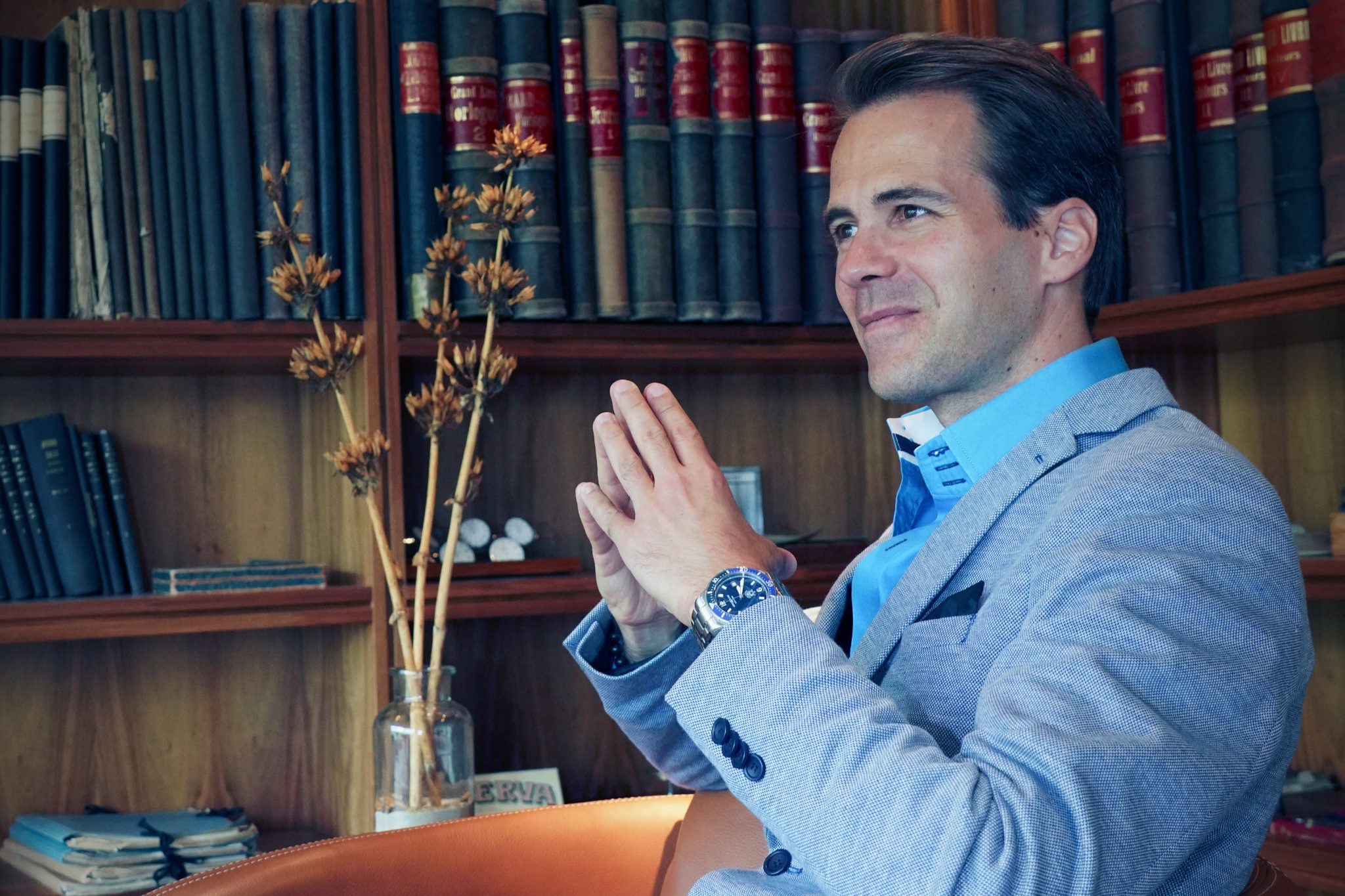
Laurent Lecamp
Head of watchmaking at Montblanc
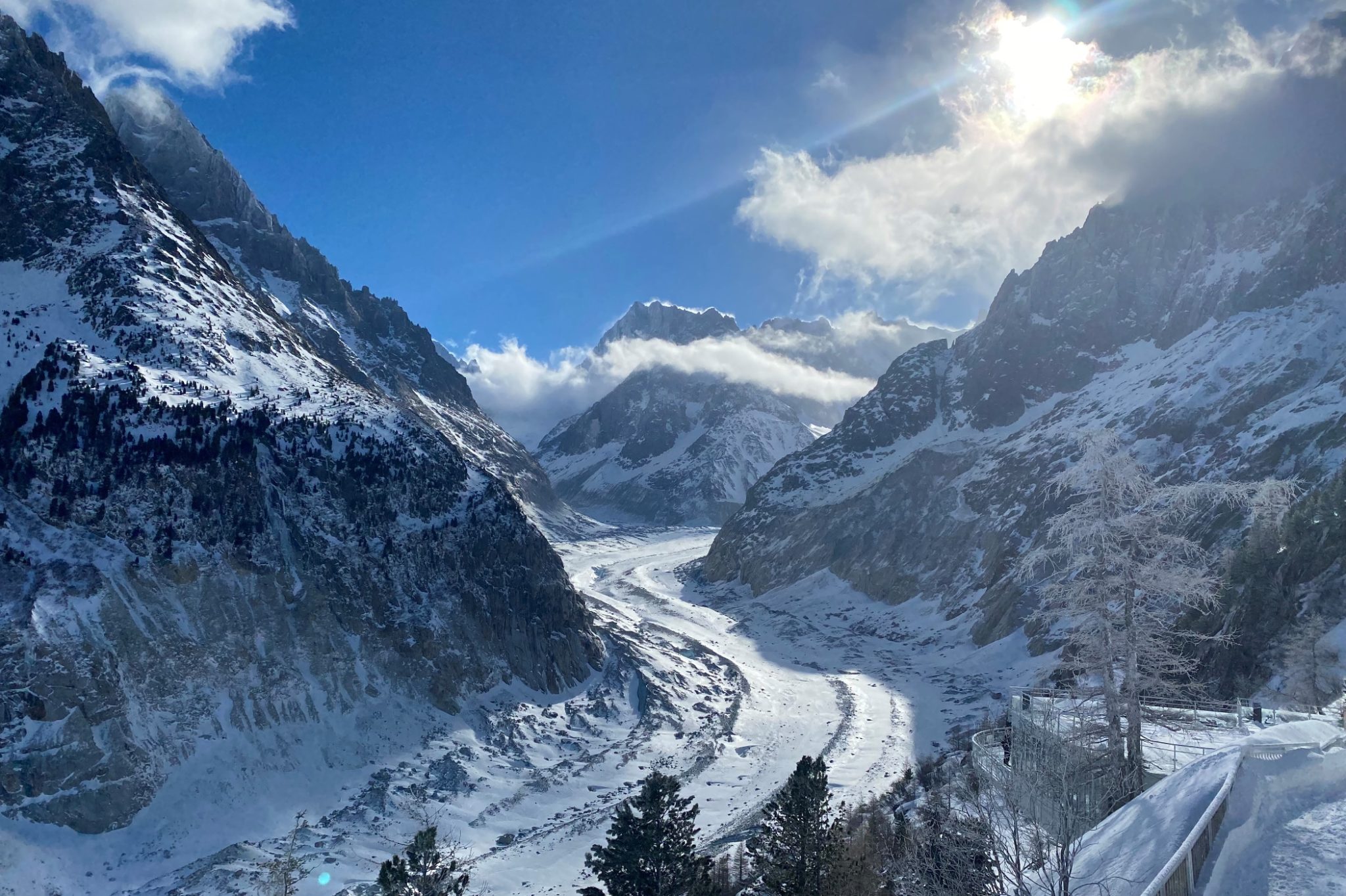
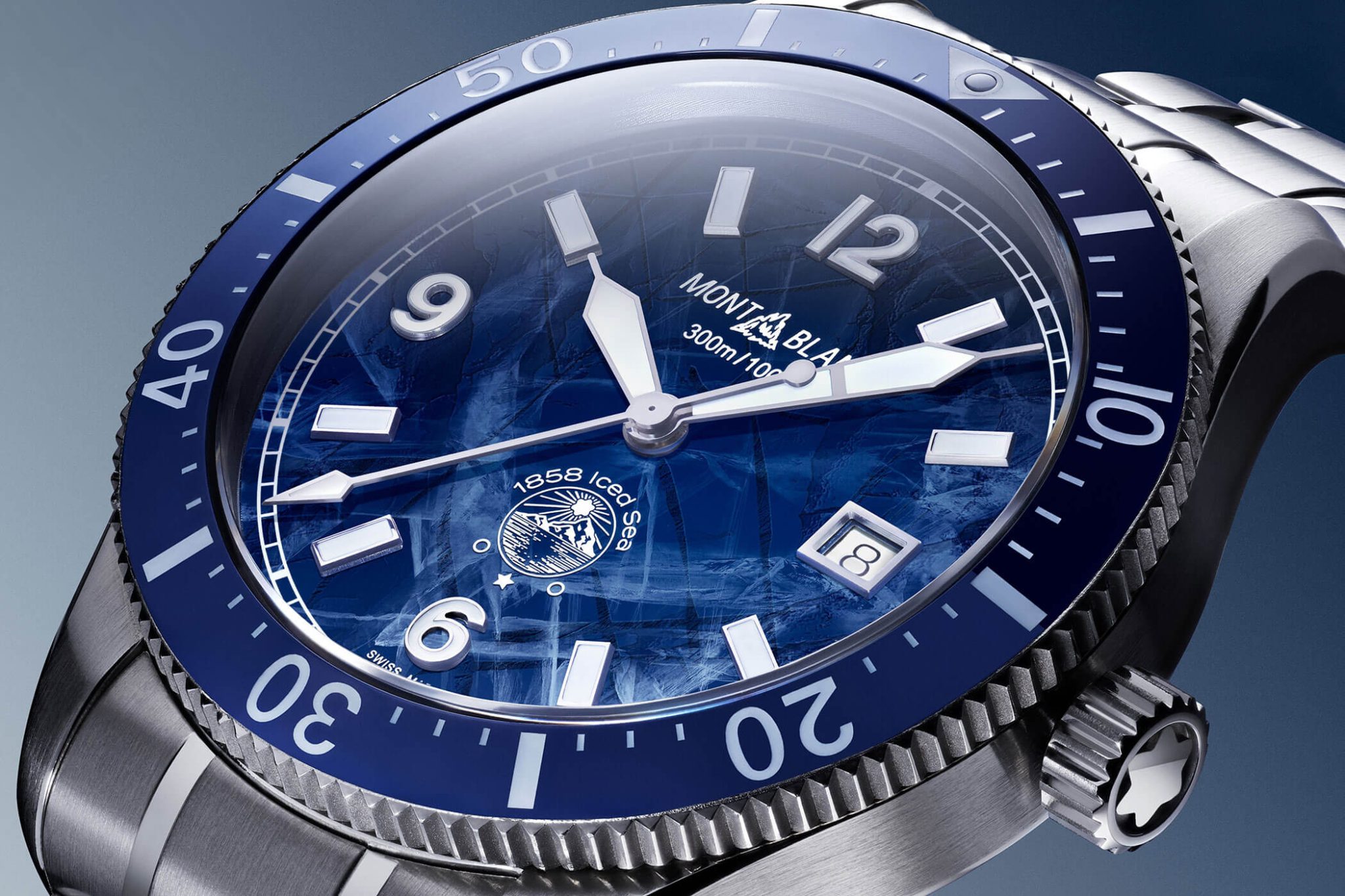
A concept of extremes
Although the history of Montblanc’s wristwatches might seem complex to collectors just starting out, it is the most exciting for connoisseurs. When Lecamp joined the Montblanc company about three years ago, he – as he openly admits himself – did not know much about the brand’s heritage. Behind the Montblanc watches there is not just one but rather two brands, including a unique manufacture that embodies a vast watchmaking universe: Minerva, the Montblanc subsidiary acquired in 2006.

Minerva in Villeret, Switzerland
Swisswatches recently met Laurent Lecamp, the head of the watch division at Montblanc in Villeret for the first time. It is the birthplace of Montblanc’s not-so-ordinary subsidiary that other brands can only dream of. For Montblanc, Lecamp is what you would call a perfect son-in-law or manager, having previously worked at Bucherer for six years before running his own watch company, Cyrus. Thus, he knows the industry inside out, from what sells to what characteristics prove vital for mechanical watches today.
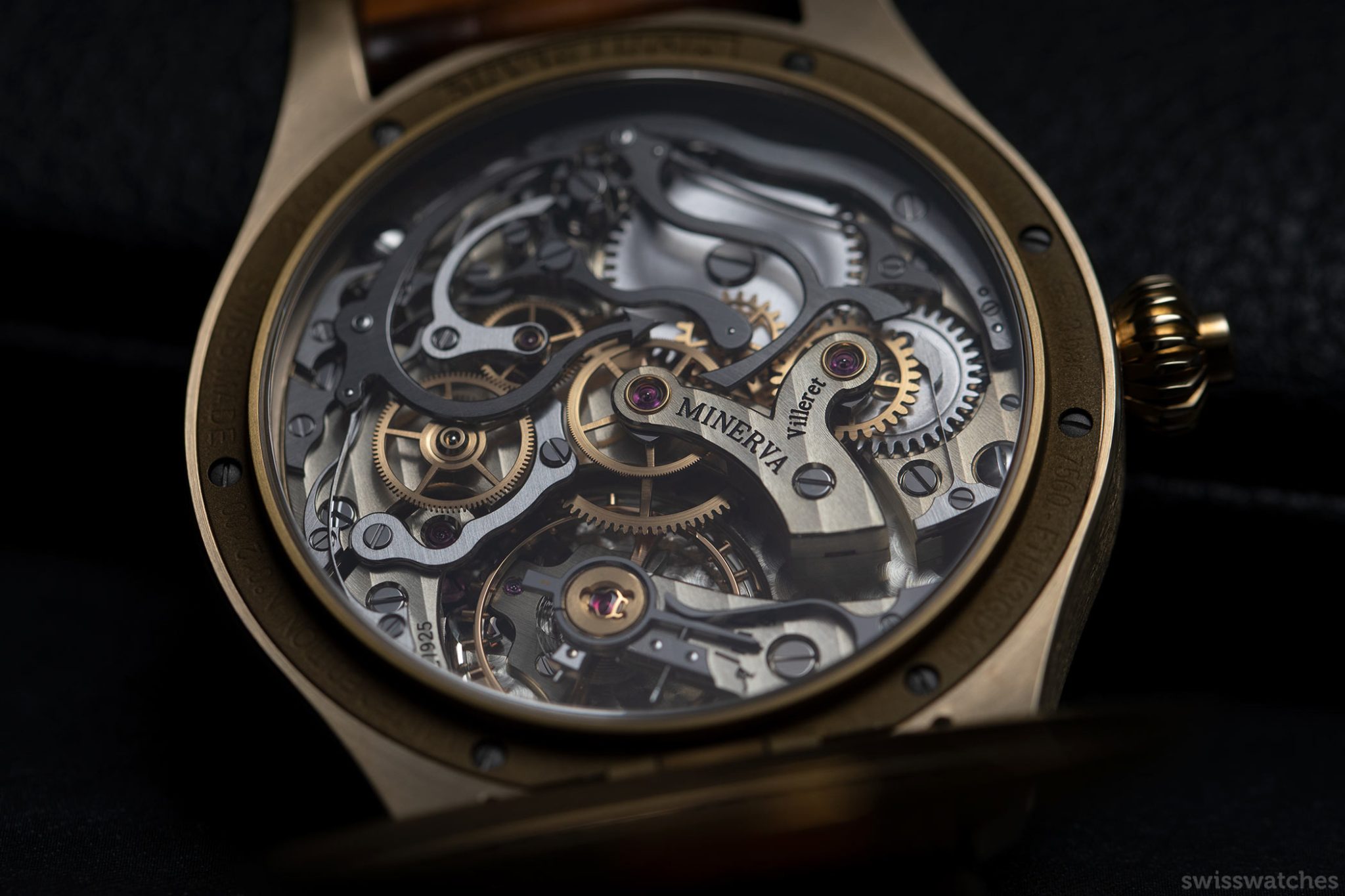
We meet Lecamp on the third floor of Minerva’s old headquarters. The building was also acquired in 2006, and today, Montblanc flags flutter in the wind in front of it. The subsidiary, particularly famous for its chronographs, has long since become an integral part of the Hamburg luxury brand. Lecamp explains: “When I started out, the two pillars Minerva and Montblanc were more of an exciting concept of two extremes.” On the one hand, he managed the fully-manufactured Minerva, which produced a few hundred watches a year and manufactured its own hairsprings, with each individual watchmaker responsible for one watch. And on the other hand, he managed the well-known, large establishment Montblanc, which develops its own watches and, with the help of suppliers, produces a few tens of thousands mechanical watches a year in the entry-level luxury class, according to estimates.

Upon closer inspection, Lecamp’s résumé reveals similarities to the two significantly different worlds of Minerva and Montblanc. Not only has he written a book on luxury (Independent Luxury) and a second on building long-term businesses (How was it in a thousand years?), but as mentioned above, he also founded his first watch brand, Cyrus Haute Horologerie. More surprisingly, he was also a wrestler in the past. Today, he competes in marathons and ultra-trails. After more than six years of developing the Japanese market for Carl F. Bucherer and subsequently the Swiss manufacture’s international strategy, Lecamp was appointed head of Montblanc’s watch division in 2021.
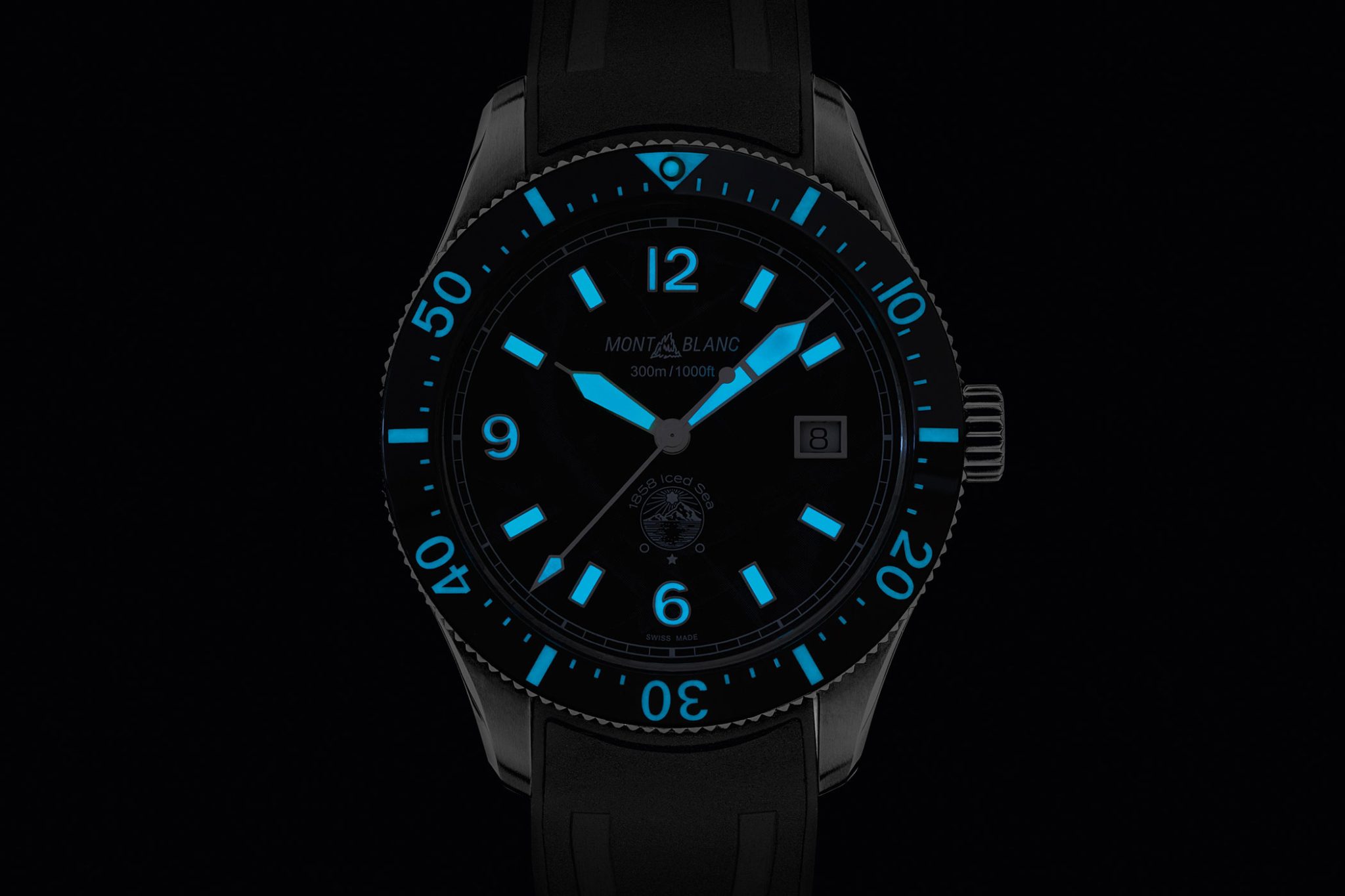
We asked Lecamp what he has changed since taking office at Montblanc. One notable thing is that the company is breaking new ground by relatively drastic means. Instead of opting for elegant wristwatches with leather straps, which actually pair nicely with Montblanc’s famous writing instruments and were created under the aegis of his predecessor Davide Cerrato, Lecamp is focusing on high-performance sports watches with metal straps. This includes models without oxygen inside, alongside many other innovations. One particular model stands out: the 1858 Iced Sea Automatic Date, a diver’s watch presented a year and a half ago. At first glance, it does not seem to fit into Montblanc’s history at all, as the company’s logo features Europe’s highest mountain. After all, this is a place where divers are few and far between. Yet, this is Lecamp’s narrative on how Montblanc came to the diver’s watch, and we are delighted to portray a brand approaching its reorientation in such detail.
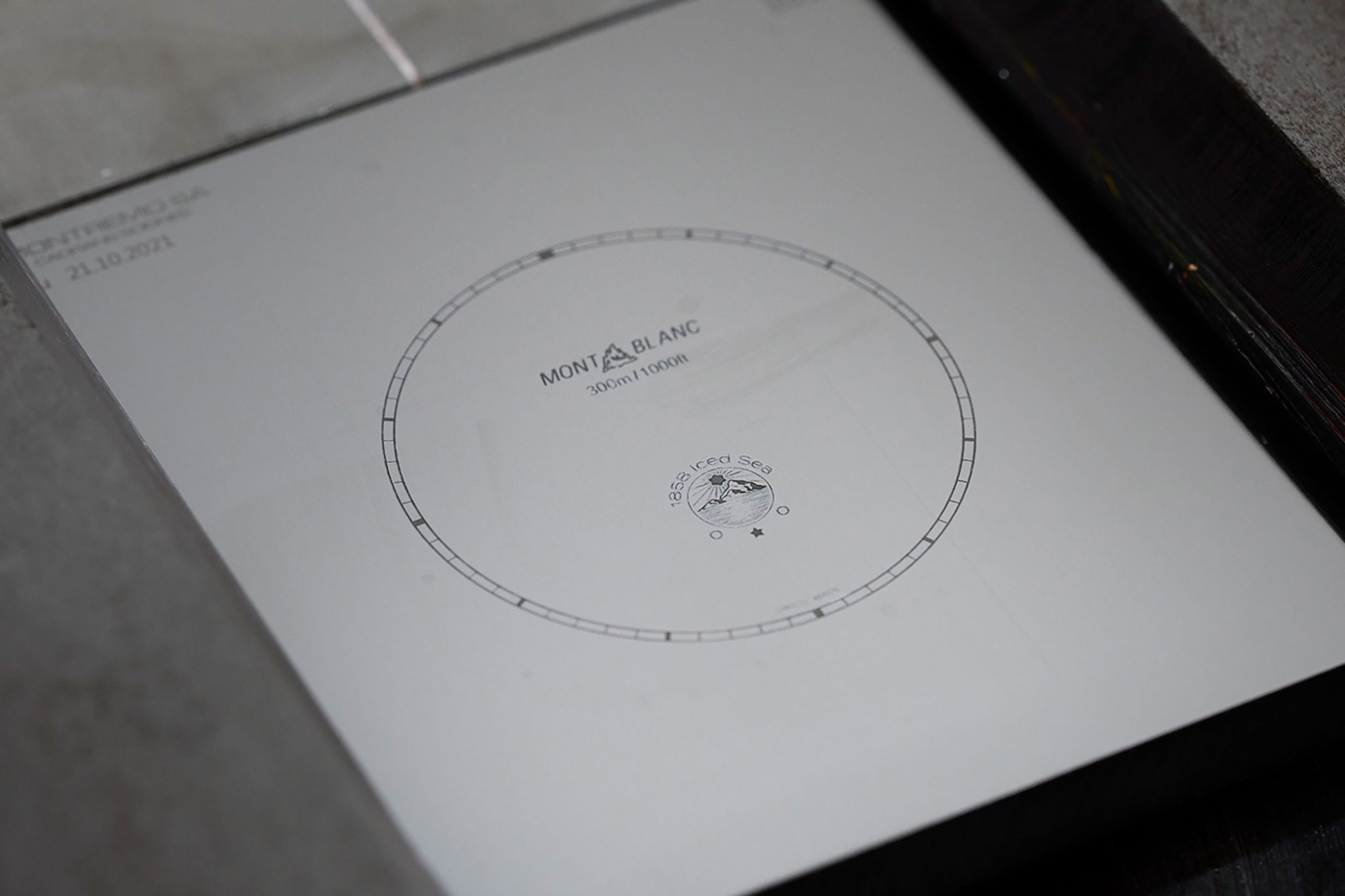
Three months of reading books
Upon joining the company, Lecamp, passionate about history, asked his team to give him all the old books on the two brands to understand Montblanc better. These books are now kept in the shelves behind us in the meeting room. He remembers, ‘For the first three months, I was constantly reading, with up to 14 books open on my desk at the same time.’
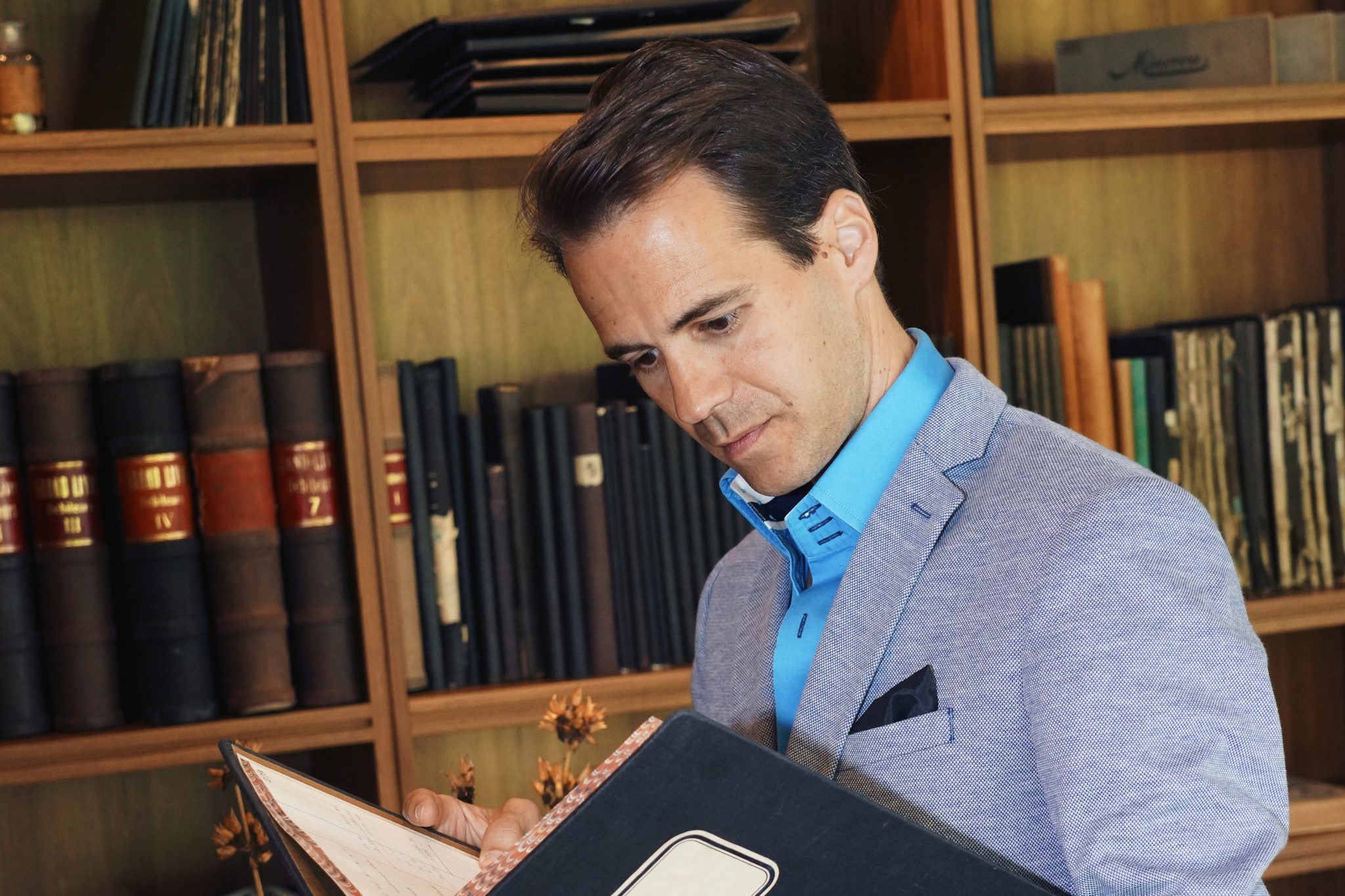
The greatest success in the company’s history
Lecamp learned a lot, and one thing in particular: Montblanc, which had been very traditional in the past, was too traditional for him. He admits: ‘I knew that it was difficult to survive with classic watches alone, especially if you don’t want to invest tens of millions of euros a year in communication.’ Generally, models without a major distinguishing feature are a big issue for any brand. Lecamp, who had worked at Bucherer, therefore decided to do something different when he joined the company. But, of all things, did it have to be a diving watch line?
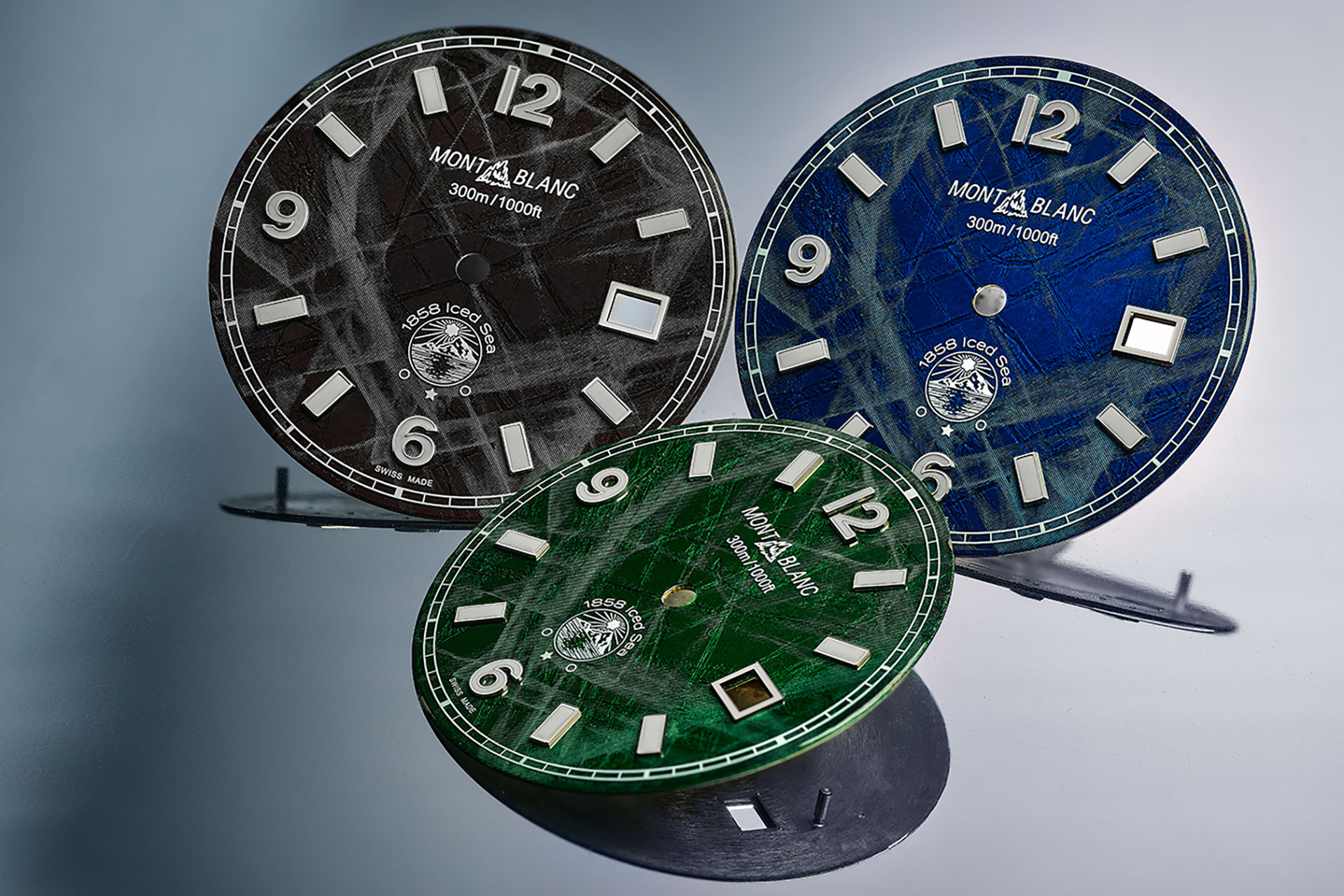
He proudly reports: ‘Today, at the end of September 2023, this collection accounts for 25 percent of our global watch sales. That’s the biggest success we’ve had since the Montblanc brand was founded.’ Incredible. How is that possible? He admits, ‘Nobody believed in it when I started. But my experience has taught me that the more people are initially against it, the greater the success will be later on.’ He explains the principle behind this statement: ‘If everyone in the watch sector says that it’s a very good idea to do something, it simply means that it’s too late to start a completely new project because everyone in the market is already doing it.’ Lecamp provided us with a detailed account of how the diver’s watch came to Montblanc.

What does Montblanc’s logo stand for?
After weeks of in-depth research, Lecamp suddenly realised that he should do something other than reading books. ‘One day, I had a look at the company’s logo and asked my team what the emblem stood for. None of them were able to explain it to me. I said: Wow, that is a problem.’ According to Lecamp, the logo was created in 1913 – keep this number in mind, as we will get to it later. Back then, at the height of alpinism, the Mont Blanc mountain was the focus of many scientists and shrouded in legend. Lecamp slowly started to understand the true meaning of the logo. He decided to create something for Montblanc in the watch sector that was more closely related to Mont Blanc than any previous model. But why a diver’s watch?

Sea of ice
Lecamp explains, ‘The logo, the white star, represents the bird’s eye view of the mountain, surrounded by its six glaciers. Thus, I decided to climb up to these glaciers. I went to the largest one, which is called mer de glace in French, translating into ‘sea of ice’. After all, we already have a sea, but no diver yet!’ Lecamp sat by the glacier all day to understand what kind of story it could tell. What sounds like a bit of mumbo jumbo is a true story, as Lecamp emphasizes: ‘At the end of the day, I wiped the sand and dust off the surface of the glacier beneath me. There was a small spot that I could observe, and I was completely amazed by what I saw: the ancient ice beneath me sparkled in the sunlight. I was thrilled: these reflections, this depth, the furrows, and the deep grooves of the glacier ice blew me away.’

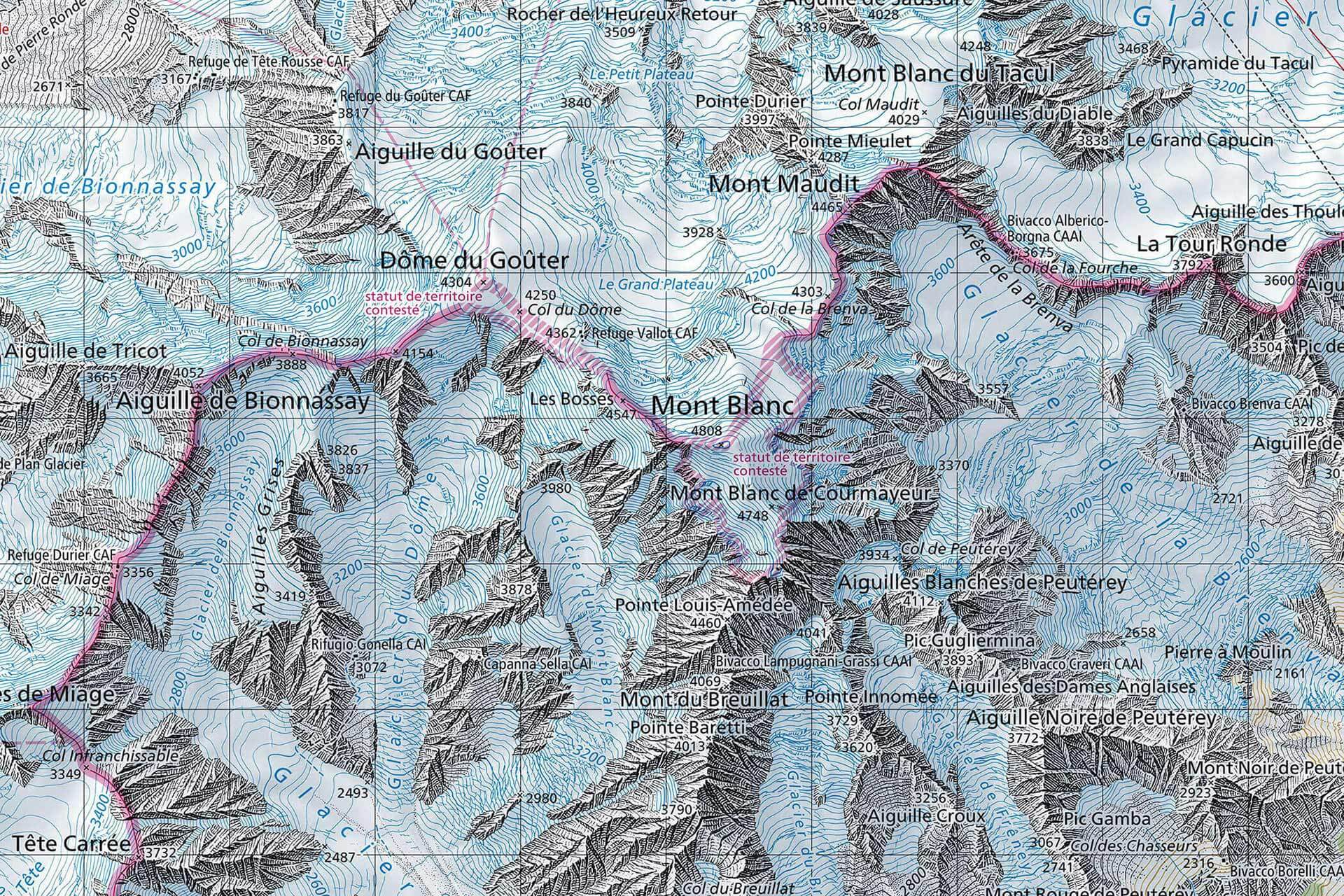
The first glacier dial in the Swiss watch industry
Lecamp took a picture and hurried home. The next day, he returned to Switzerland with his team. He told his colleagues that Montblanc should create the first glacier dial in the watch industry. He recounts, ‘People asked me, why? I said: Because it’s inspired by what the people wanted to create when they developed this emblem for Montblanc.’ He then gave the photo to one of Montblanc’s dial manufacturers and said: ‘I want exactly this as a dial.’ The supplier laughed. Laurent was told that the ice of a glacier reached many metres deep and that his dial was 0.4 millimetres thick. But Lecamp did not let up: ‘I told the supplier: Make it happen, and you’ll get all our orders for the next few years.’ He guaranteed that Montblanc would not have to work with two or three different producers for the product. A good deal, the boss agreed.
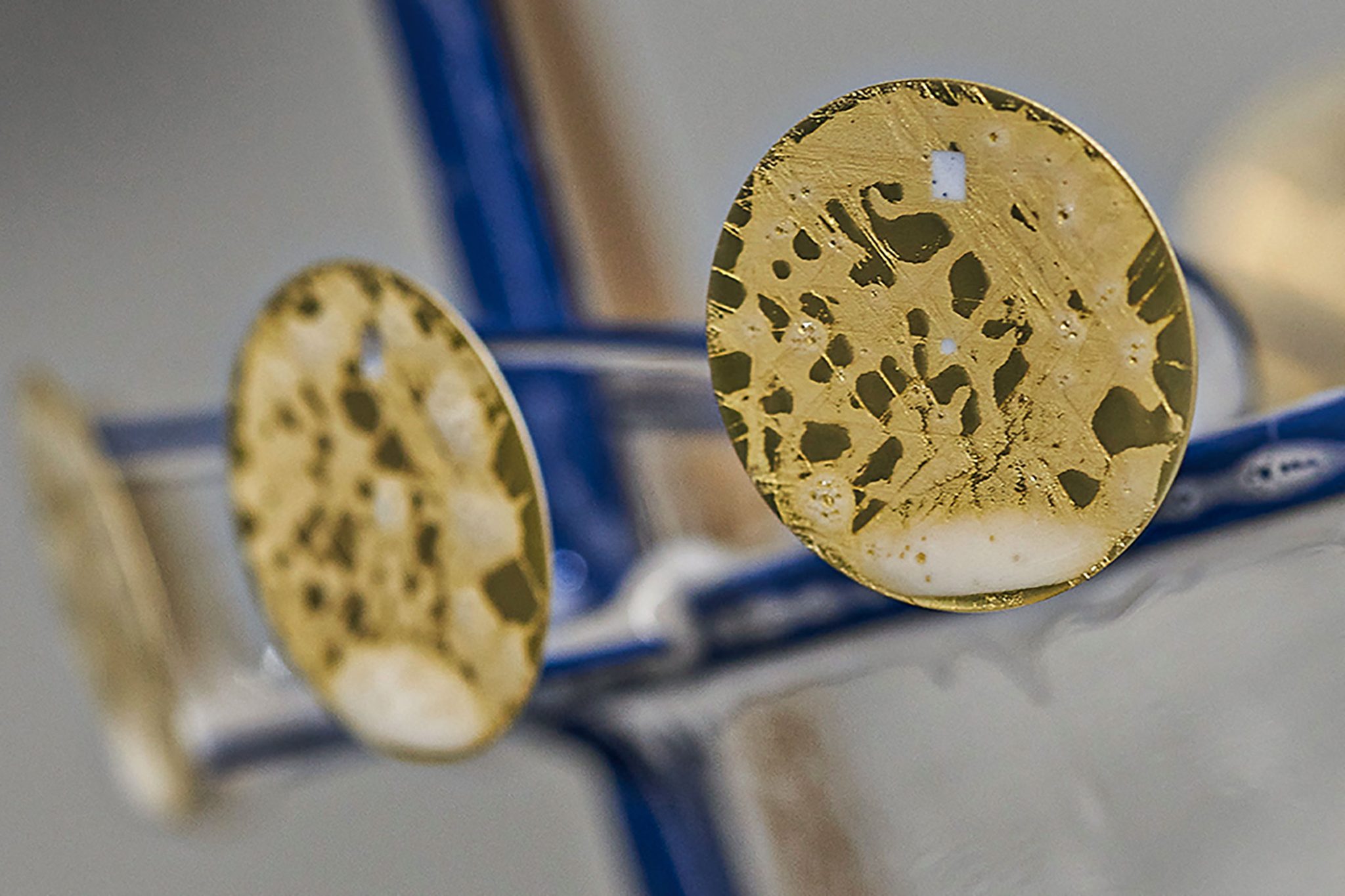
An award-winning dial
After developing 38 different prototypes over the course of several months, Lecamp’s team succeeded in creating a dial that is unique to the industry today in more ways than one. Unlike in a regular production process, the Montblanc glacier dial cannot be assembled within five to six days. Lecamp notes, ‘Astonishingly, it takes 30 days because we need 30 different layers to produce this unique dial due to the lacquering.’ It really does sparkle like glacier ice in the sun, as Lecamp demonstrates on the rooftop terrace in Villeret.
A technique that was almost lost
Today, this technique can only be found at Montblanc. Lecamp explains, ‘We use a very old process from the 19th century called gratté boisé. It’s an old technique used to polish surfaces, but it doesn’t actually remove any material.’ He adds proudly, ‘We are the last in Switzerland to use this technique. The only other brand stopped 15 years ago.’
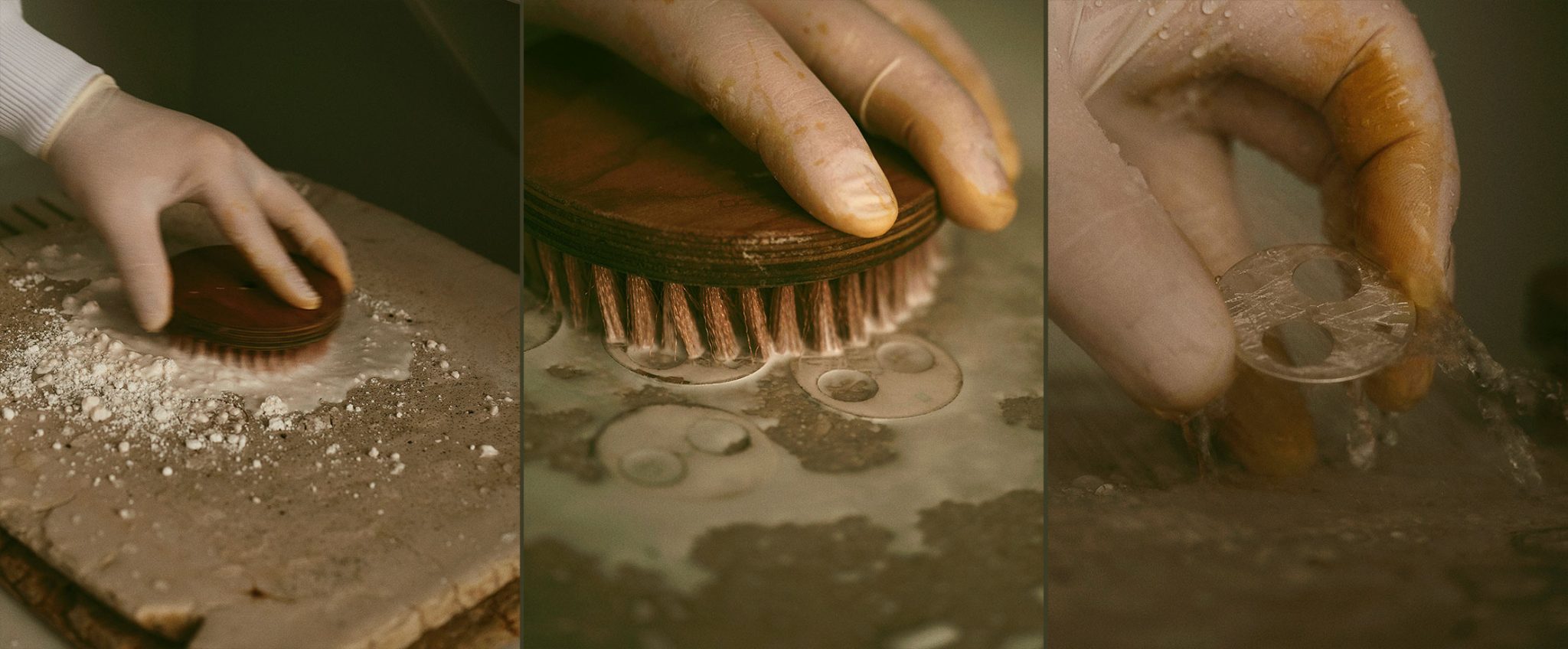
The best dial at Watches & Wonders
When he presented the 1858 ICED SEA Automatic Date at the Watches & Wonders trade fair in Geneva a year and a half ago, Montblanc’s dial was well-received. Lecamp, ‘For the first time in our history, it was crowned the best dial at the fair by GQ USA. Every year, GQ honours the best movements, the best cases, and therefore all parts of a wristwatch.’
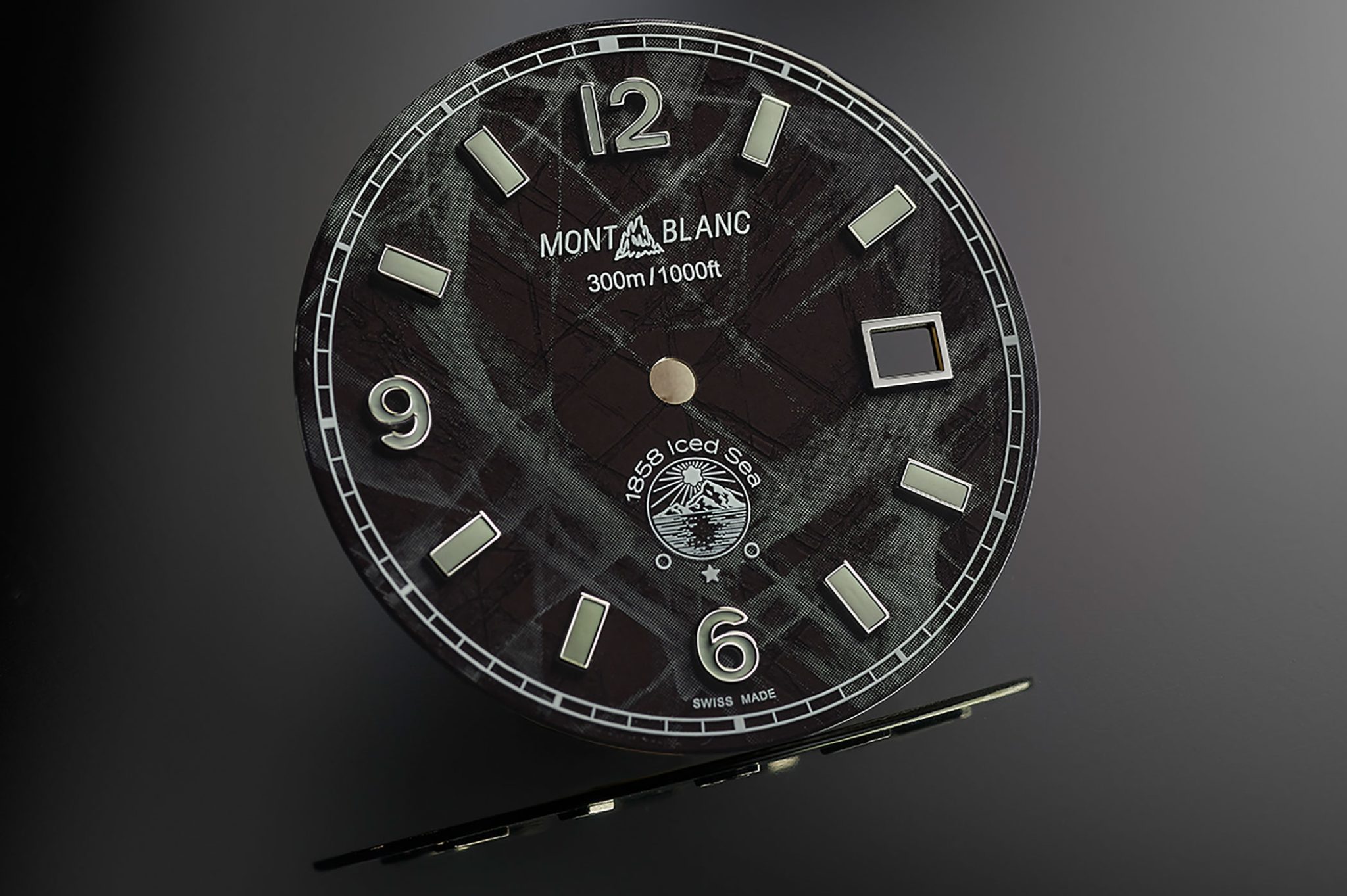
Green glaciers
The Iced Sea Collection encompasses dials that shine in green, blue, black, grey, and white. But are these the actual colours of glaciers? Lecamp emphasises: ‘Glaciers come in all these colours. We decided to solely base the colours for the dials on the natural colours of glaciers in nature. Anything else would be absolutely implausible.’ And indeed, if you google green glaciers, you will find what you are looking for.
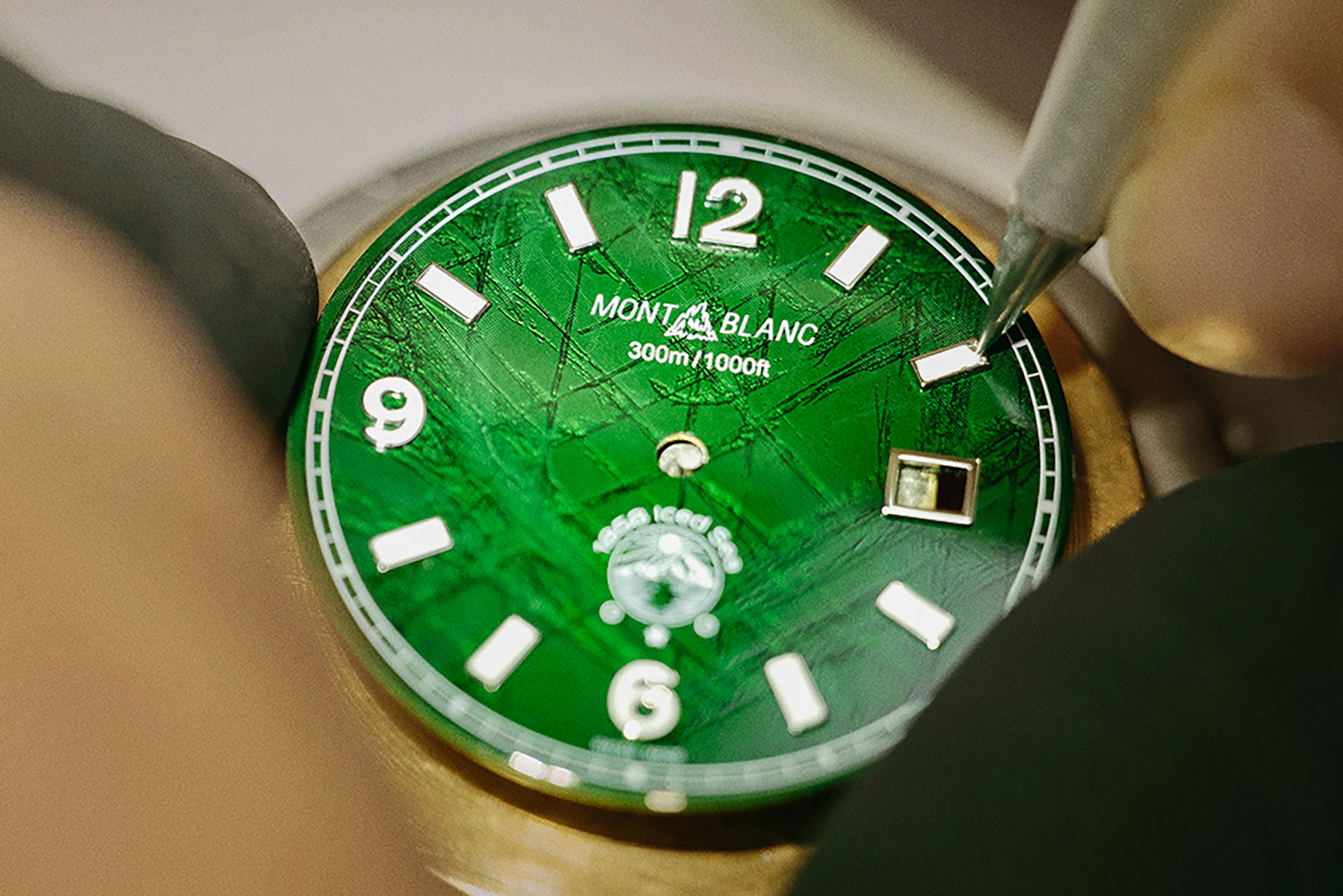
Why Montblanc is manufacturing a diver’s watch – and why it will be a success
Addressing criticism that his watches resemble a mainstream sports watch in principle, Lecamp does not react badly at all. On the contrary, he feels challenged. Where is the connection to the brand here, we ask? For Lecamp, the diver’s watch was almost a necessity: ‘As mentioned at the beginning: the name of the main glacier on Mont Blanc is Sea of Ice,’ says Lecamp, ‘That’s why we named the watches Iced Sea.’ He adds, ‘The glacier was discovered by two British people in the 18th century. They were so impressed that they named it the ‘Iced Sea’ when they returned to England. However, most of the world’s glaciers are actually located at the edge of the oceans and at the polar ice caps. We saw a connection to the world of diving and Montblanc also had sports watches in its range in the past, but they disappeared over time.’
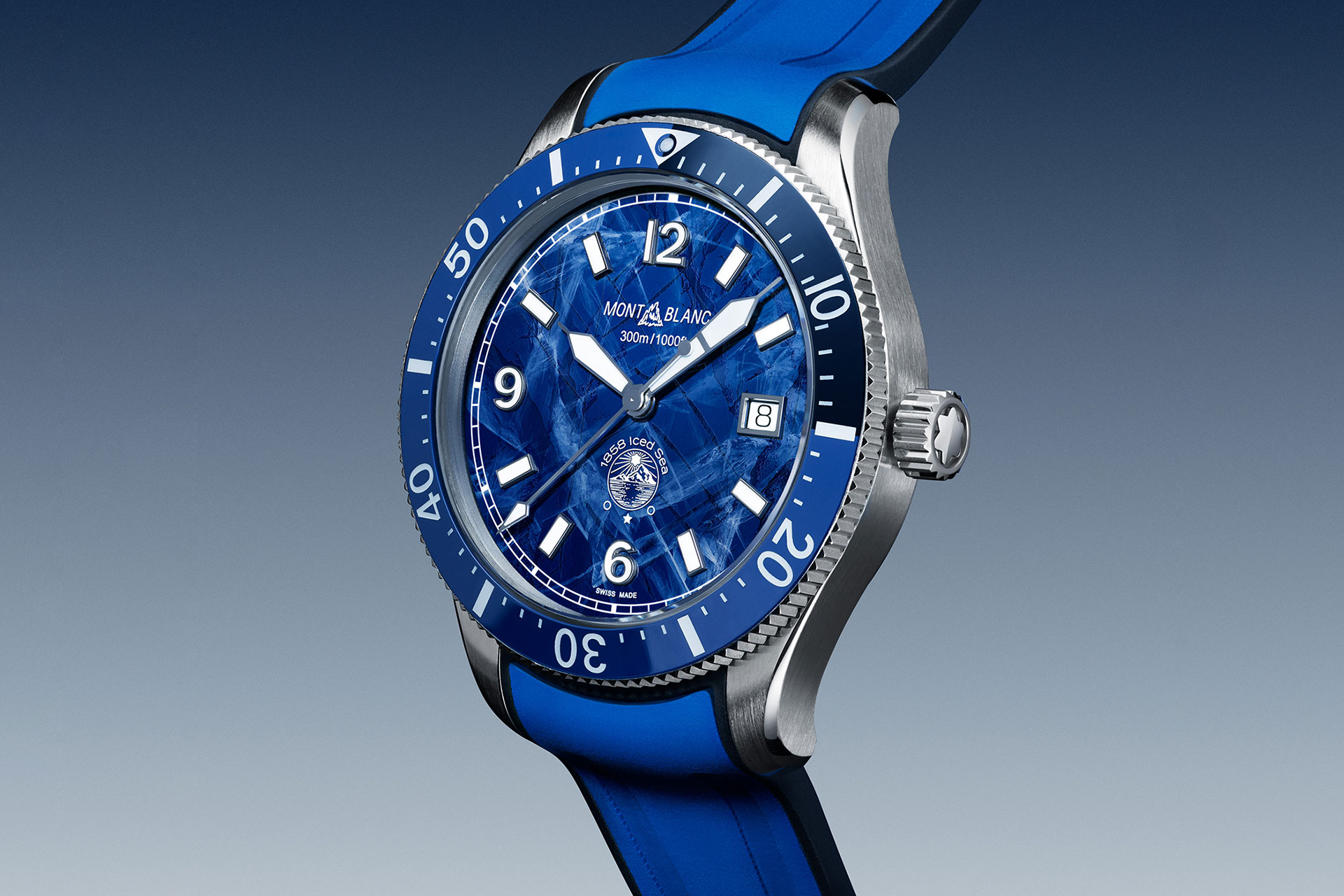
Diver’s watches: Big competition, similar look
Naturally, Lecamp’s idea of launching a diver’s watch on the market was met with resistance: ‘There are many diver’s watches on the market, the competition is fierce, but nobody expected us to offer this type of product.’ Thus, he was able to capitalise on this element of surprise. However, Lecamp knew, ‘Diver’s watches, which are generally very successful with customers, have a problem when it comes to design. These watches often look more or less the same because, if they are to fulfil the highest technical requirements, they automatically have to look more or less similar.’ This is where his attention to detail, dials, and connection to Montblanc came in handy.
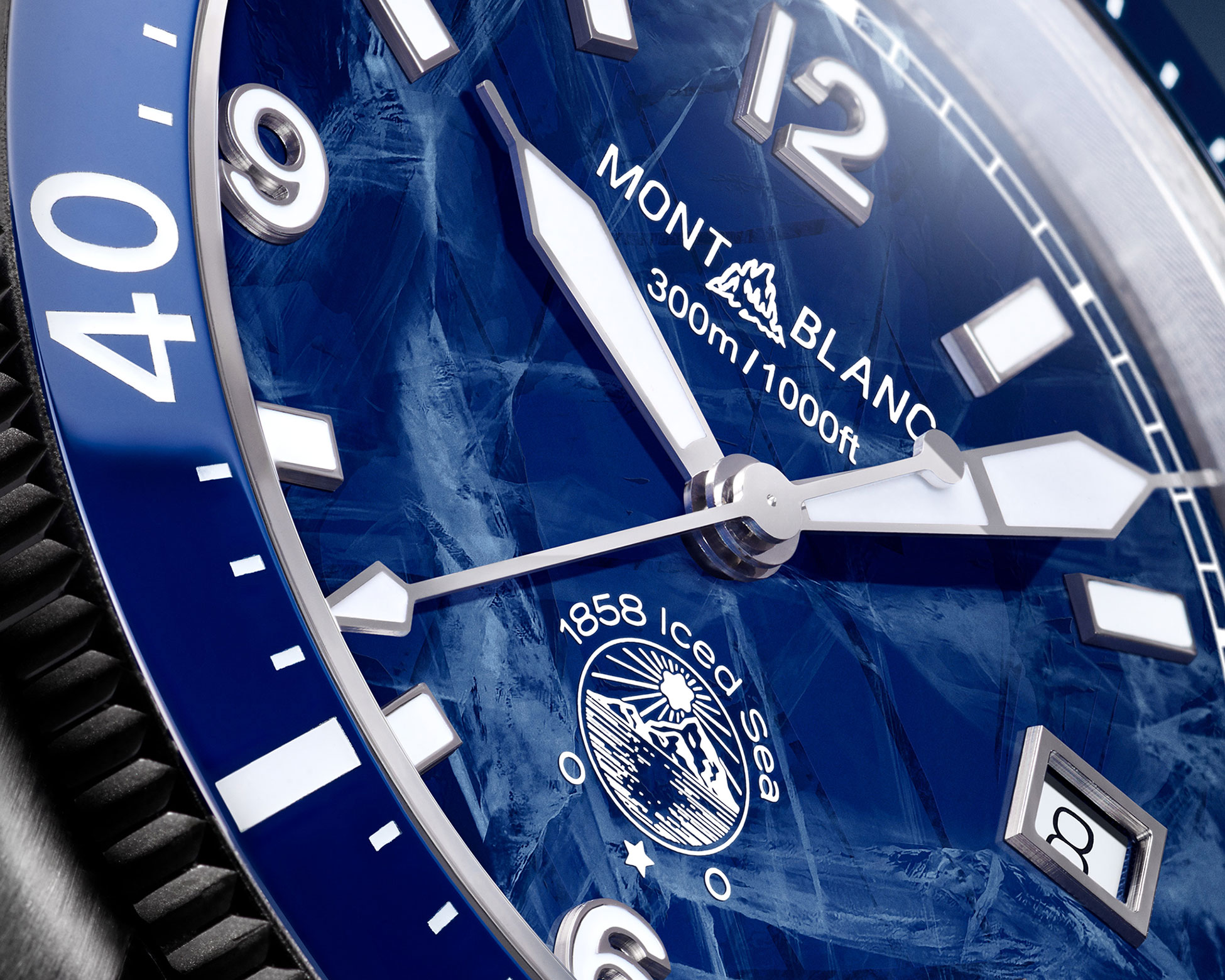
Quality trumps standard
He had a clear vision: a diver’s watch that exceeded the standard. The highest standard in the industry for diving watches is ISO 6425, and very few brands have watches in their range that are manufactured in accordance with it. Lecamp is proud to have succeeded: ‘Our product fulfils 100% of the requirements for ISO certification.’
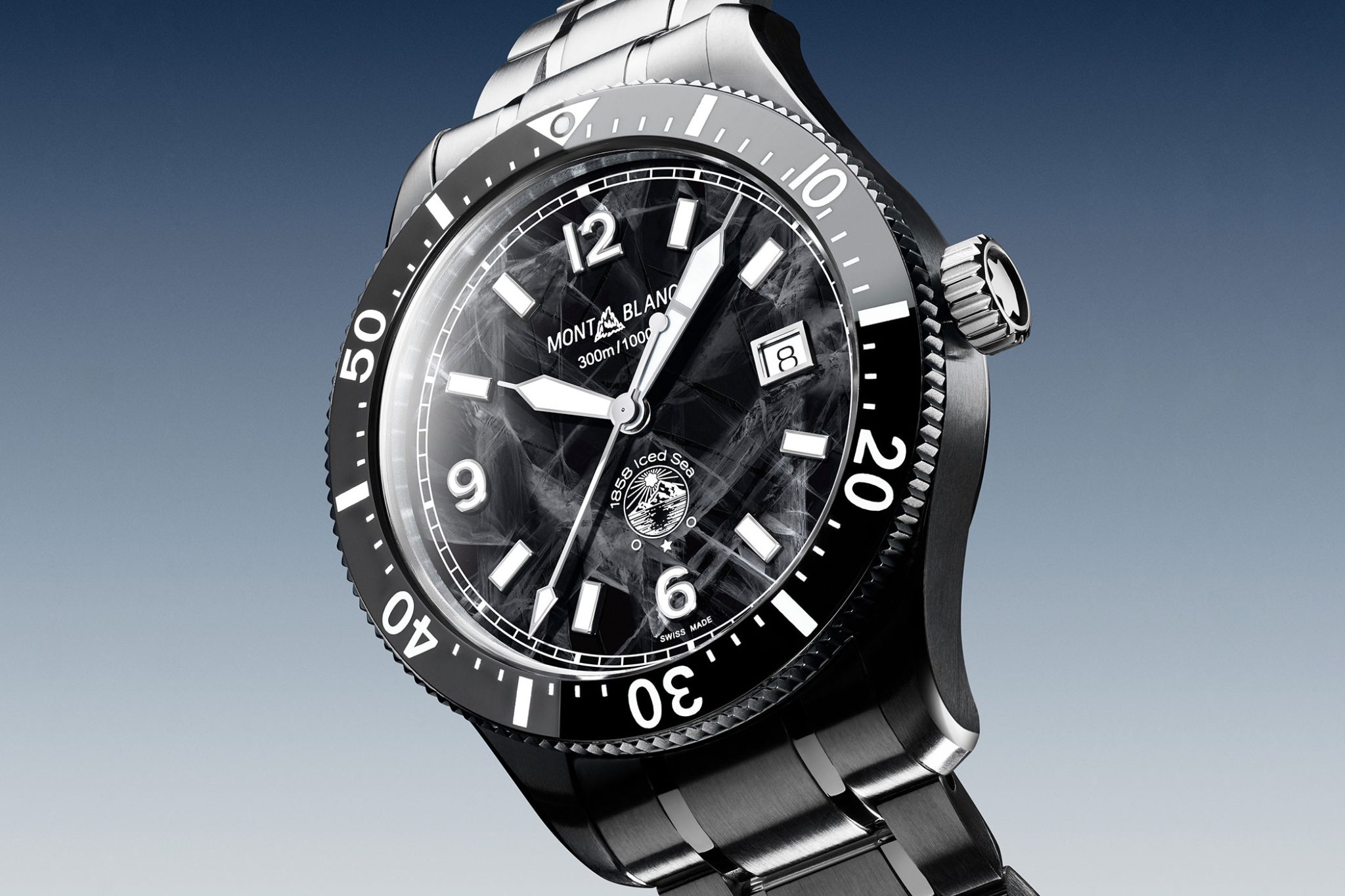
How to create the perfect steel bracelet – what customers really want
Every reader will have noticed by now: Laurent Lecamp is obsessed with details – the ones that matter to collectors. This also applies to the bracelets of his diver’s watch with a glacier dial. He explains, ‘When I started at Montblanc, we sold 24 percent of the models on steel bracelets. I came from the Bucherer Group, and on average, it was 70 percent for all sales outlets worldwide combined.’ So, he told himself that there was potential. Lecamp recalls, ‘Internally, I was told: We are Montblanc, we tend to make watch straps made of leather.’ But he persisted because he knew from his previous employer that the exact opposite sold much better, because ‘people simply love steel bracelets,’ says Lecamp.
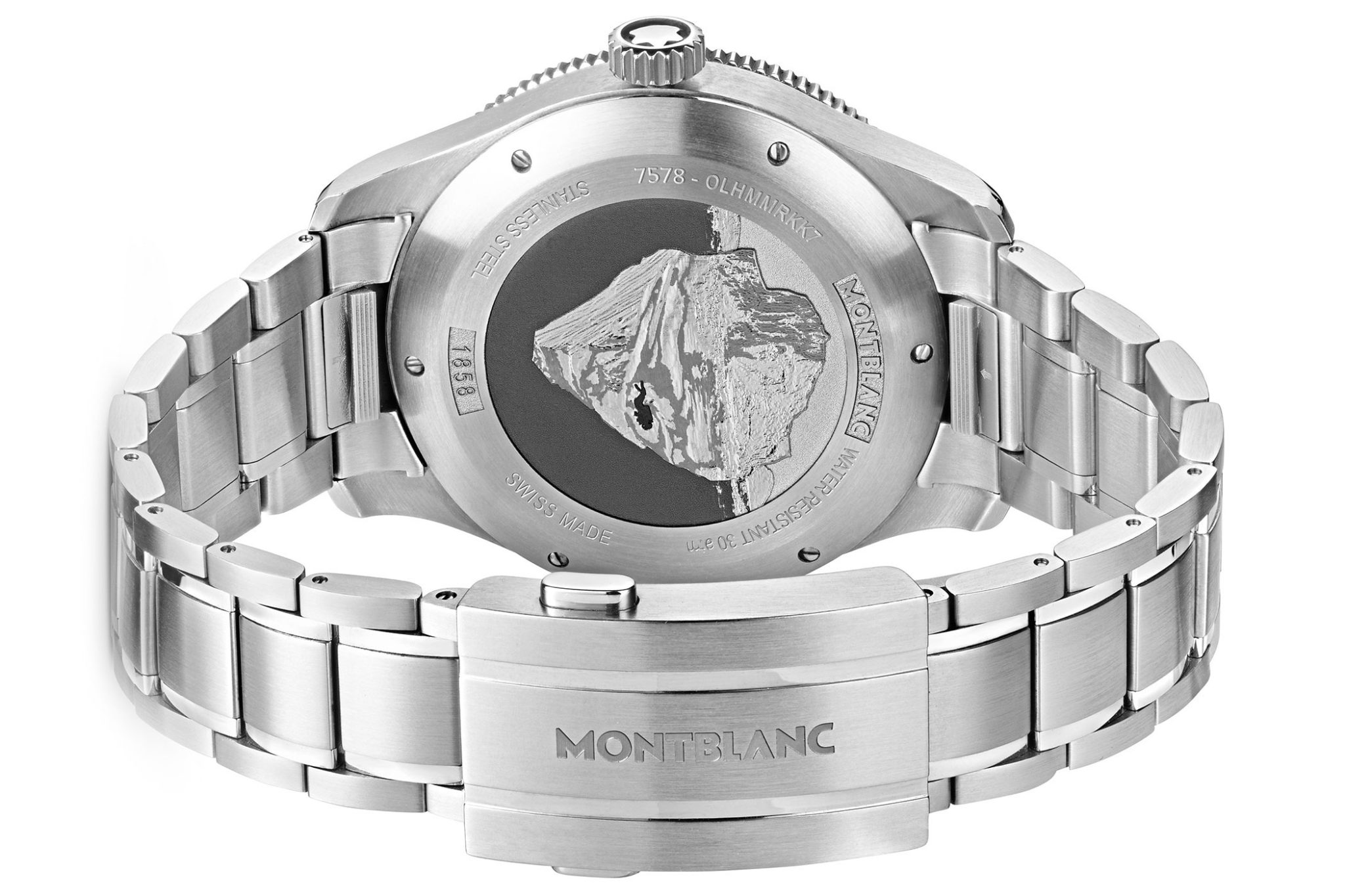
Metal bracelets: The finer details matter
He first went on an internal search to find out why Montblanc was no longer producing steel bracelets. His team explained to him that there were always problems with the metal bracelets because they repeatedly had to be adjusted to fit the customers’ wrists in winter or summer. The temperature-related expansion of the material ensures that the watches are either too loose or too tight around the wrists. The worst thing you could have as a customer is a wristwatch that does not fit. The solution seemed simple and exemplifies Lecamp’s philosophy: ‘The fine adjustment system using detents seems like a small matter, but it immediately increased our steel bracelets’ sales by 50 percent. Today, we sell up to 70 percent of the watches in the Iced Sea collection on a steel bracelet.’ At the same time, up to 35 percent of this collection is sold on a rubber strap, a material Montblanc, with its own leather manufacturer in Italy, is not at all concordant with.
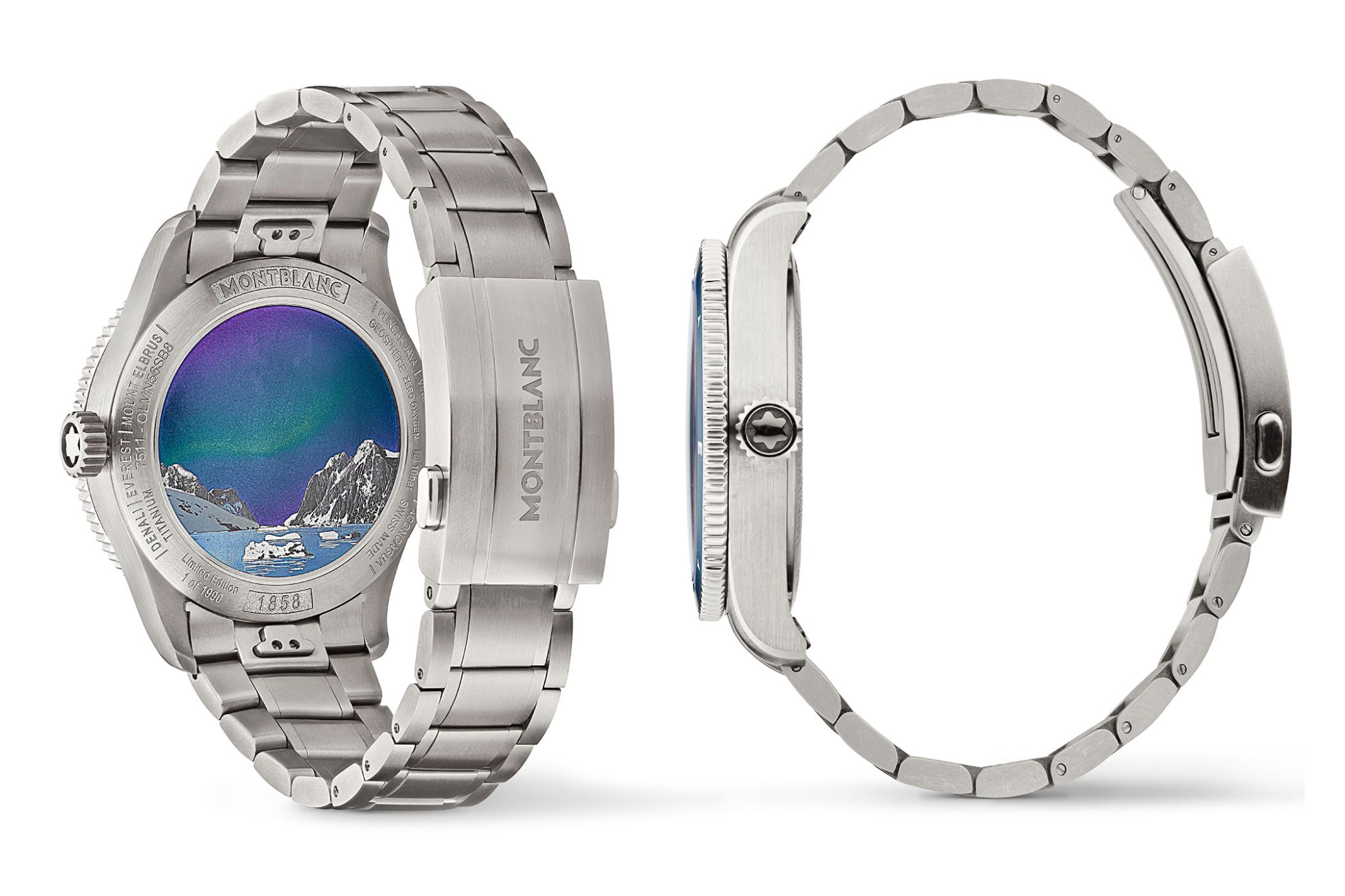
Attention to detail: Montblanc’s special rubber strap
Lecamp is enthusiastic about every little detail, which is rare for managers in the watch industry today: ‘Look at the material: The rubber we have developed is of exceptionally high quality in this price range. We created two moulds for it. Therefore, it is a very modern rubber strap that is very light on the skin. And we have also developed a special clasp especially for this rubber strap, which you can also change with our new fine adjustment.’ Only two brands in the world do this at the moment: one of them is Montblanc, and the other is Rolex. But why a fine adjustment system on a rubber strap? For Lecamp, it is self-evident: ‘Some people really want to go diving with their watch, but without fine adjustment, the watches would be sitting too tightly on a wetsuit.’
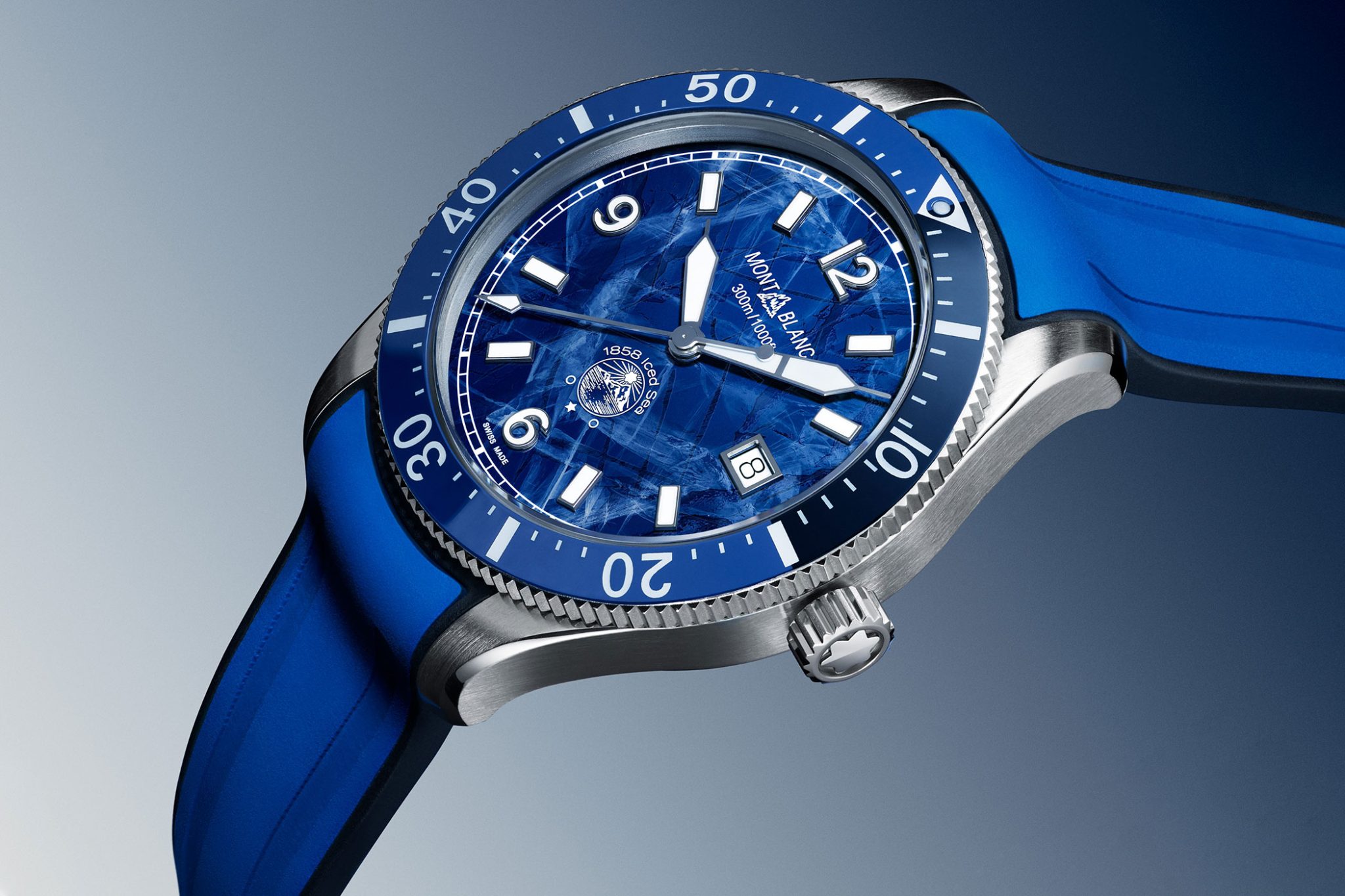
If you want to be successful, take a closer look
Many of his ideas may seem trivial. In fact, they stem from simple observations. Lecamp shakes his head and says, ‘The fact that our steel bracelets were loose on the wrist was simply the reason why they weren’t successful.’ According to him, these little things make a difference. Then, Lecamp points to the lugs. By pushing on the back, he detaches the strap from the case and explains, ‘Customers swapping out the straps by themselves is something that is becoming increasingly common in the luxury sector. Every Apple watch can do this, so it’s also something we’ve introduced with the Iced Sea.’
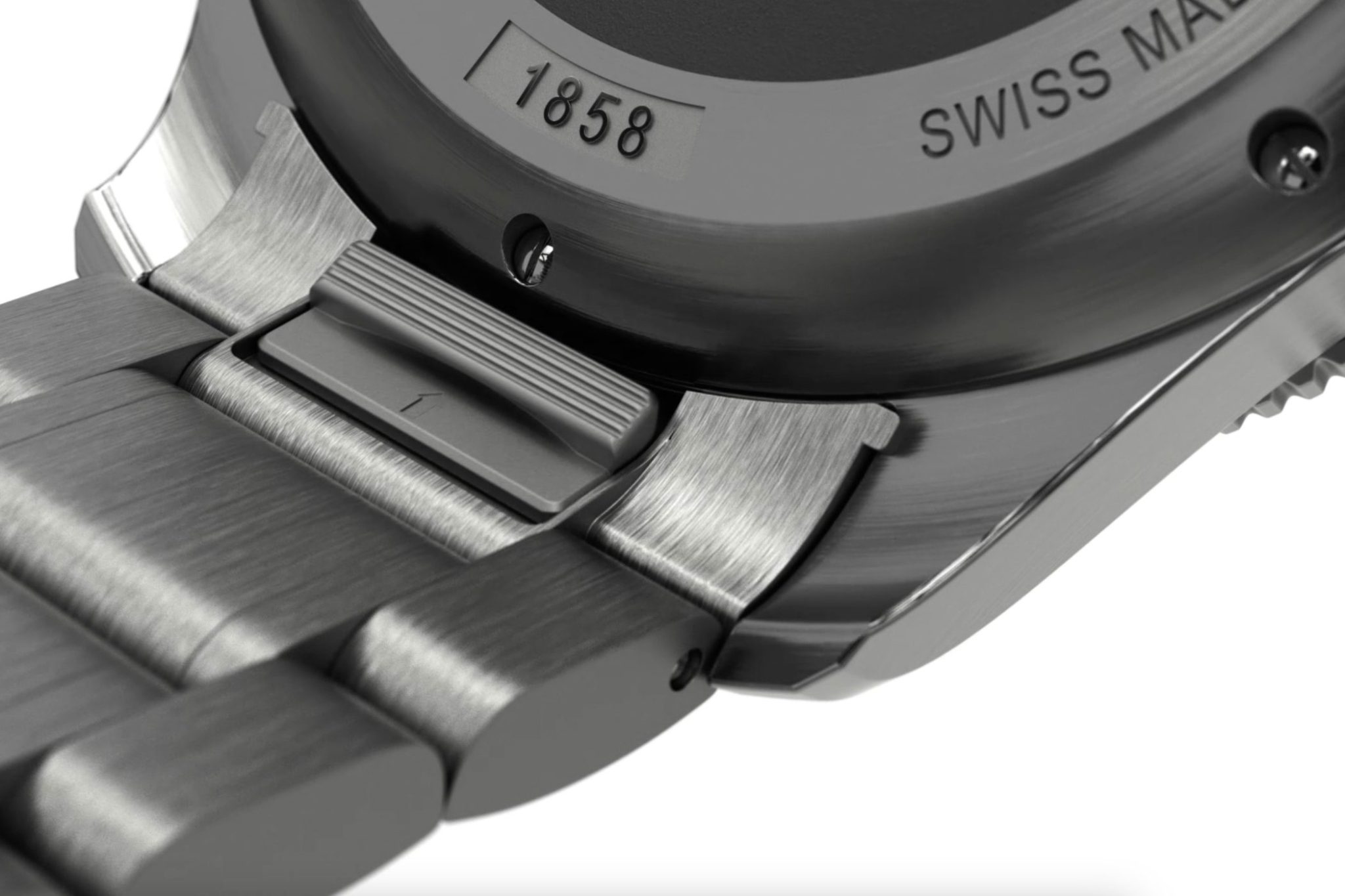
A bezel that sounds like a dolphin
Finally, Lecamp asks us to close our eyes and listen to the sound he has developed for the unidirectional rotating diver’s bezel. It squeaks next to my ear. The sound immediately seems familiar, not from the competitors, but from childhood. It is reminiscent of a dolphin chattering, a sound that no child will ever forget once it has heard it. The rotating bezel sounds exactly the same. Lecamp smiles and proudly explains, ‘We have even linked the sound of this watch to the world of oceans and seas. It’s clearly a dolphin. You won’t find this dolphin sound in any other watch. We truly asked the supplier to develop something that had never been made before in the industry in terms of sound.’ Initially, the supplier had asked Lecamp what he smoked in the morning, but in the end, they laughed contentedly.
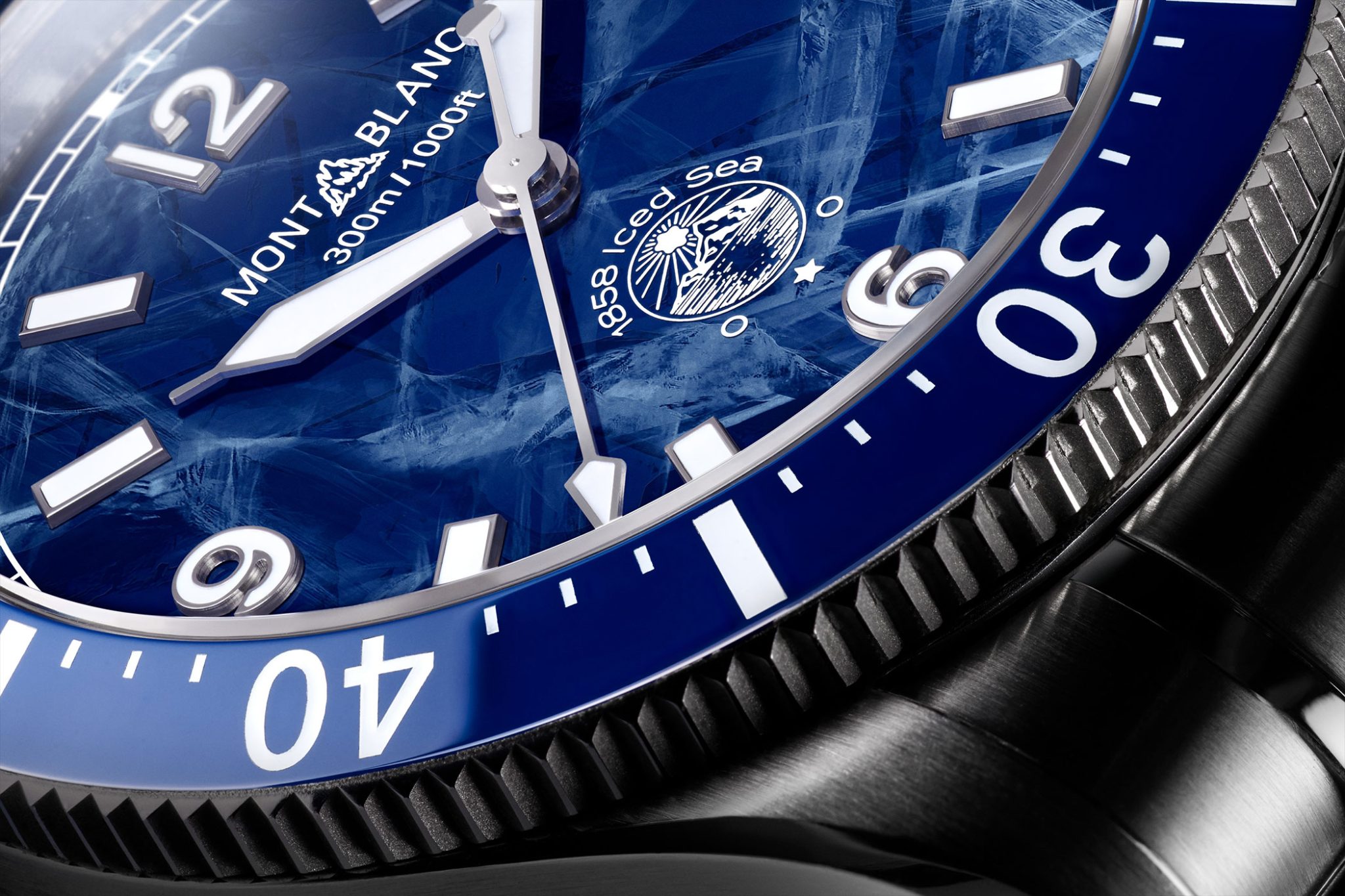
Zero oxygen – A breathless Laurent Lecamp
You can listen to Laurent Lecamp for hours on end about how he developed all the details for Montblanc’s latest watches. This man has simply understood what watches are all about today: anyone can do storytelling. But storytelling that makes sense and suits a brand’s philosophy is an art. ‘Hold your breath for a moment,’ he asks me in the middle of our conversation. At Watches & Wonders in Geneva this spring, Montblanc presented the first timepiece in the watch industry that does not contain oxygen. How did he come up with that? ‘It’s simple: we’ve been working with Reinhold Messner since 2021, who was the first person in history to climb the world’s highest peaks without supplemental oxygen in the 70s and 80s. So, we decided to develop watches in connection with the story of Reinhold Messner and the world of mountaineering,’ Lecamp says.
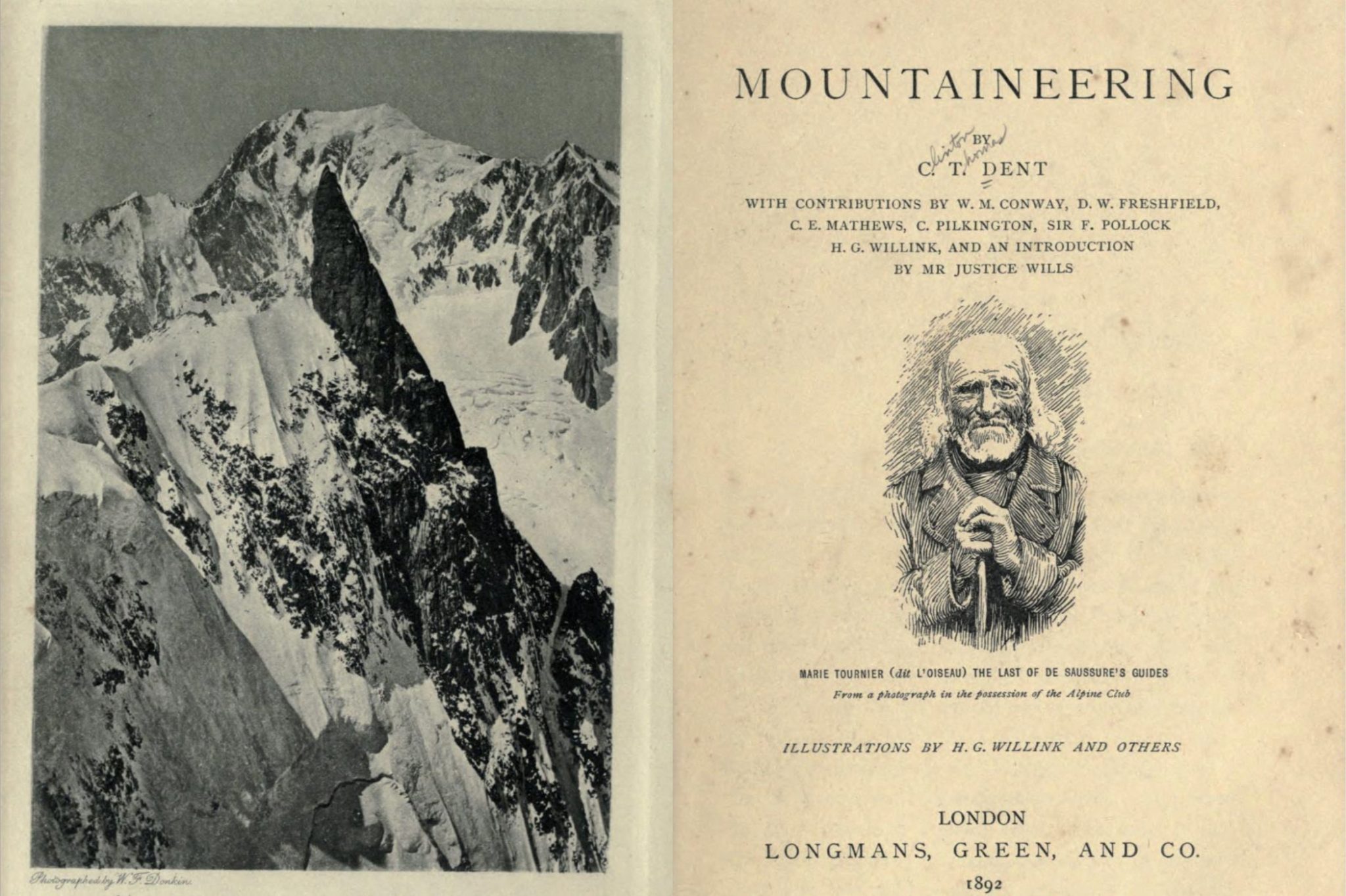
Zero Oxygen – marketing or functional feature?
Montblanc has removed the oxygen from the inside of specific watches and replaced it with a natural gas, nitrogen. For Lecamp, this technology is not a marketing gimmick, as he remarks, ‘We observed two things: firstly, moisture does not build up inside the watches anymore, nor do any droplets that appear when you quickly move from a cold place to a very hot one, such as getting off a plane, where the air temperature was 20 degrees, and now finding yourself in the 35-degree hot tropics.’ He is also proud of the fact that the lack of oxygen prevents the lubricating oil in the components from oxidating. A blue seal between the sapphire crystal and the case insures there is no oxygen inside the watches.
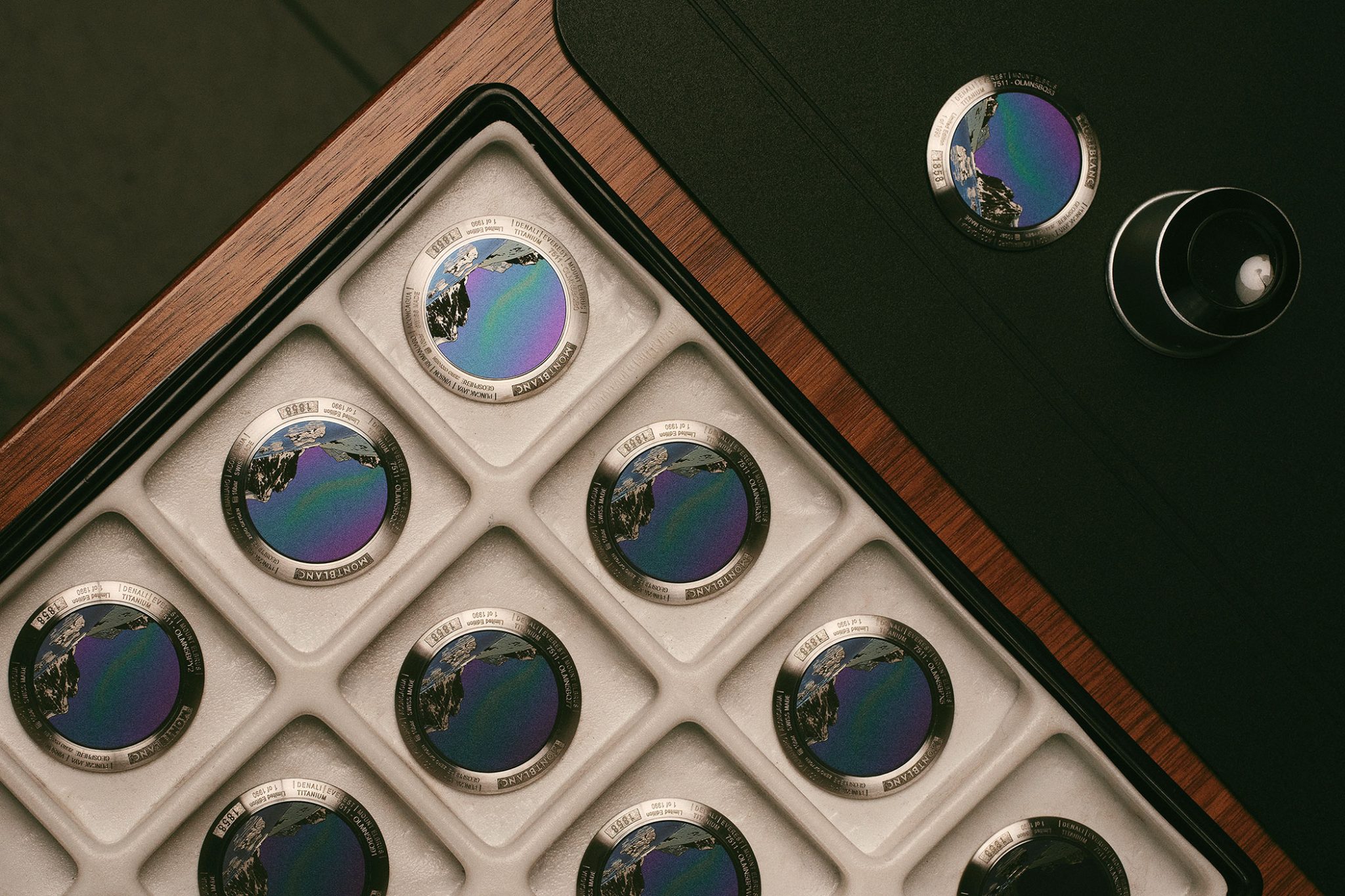
Deliberate oxidation – using a laser
A completely different technique, where oxidation processes are essential, is used by Lecamp on the back of some limited-edition models, such as the Montblanc 1858 Geosphere Zero Oxygen. The models’ casebacks are made of titanium, which is practical as it is anti-allergenic. Above all, these casebacks are adorned with incredibly detailed motifs: sometimes with the Mont Blanc massif, sometimes with the K2. The mountains glisten in natural colours. Lecamp explains, ‘This happens with titanium when you irradiate the surface with a laser and the material oxidises depending on the laser’s temperature. If we tried to do this with another material, this laser engraving and oxidation process would no longer work.’
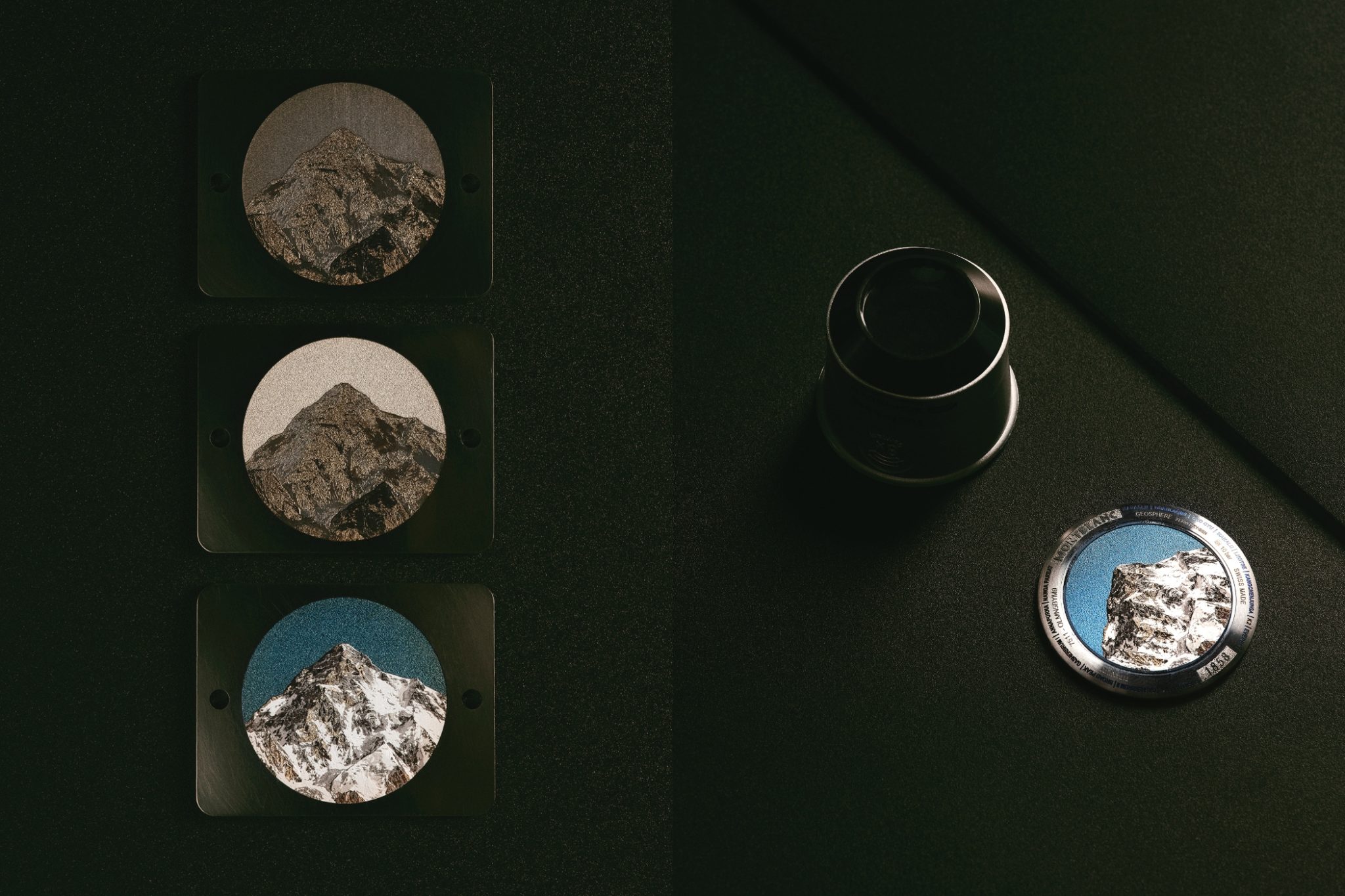
What Lecamp finds particularly charming is that you can only work with the colours of the rainbow: ‘Nature doesn’t make it possible to create more colours. Yet, it is precisely this limitation that makes this technique so appealing.’ It all began with a photo of Mont Blanc near Chamonix. Lecamp notes, ‘In the end, we probably needed a few hundred hours with our supplier to find a way to recreate the image as a laser engraving.’ Once he and his team knew how to do it, it quickly became clear that this technique would only work for limited-edition models: ‘It takes three and a half hours to laser each caseback,’ says Lecamp. This is why there are only 191 pieces of the Iced Sea triple (Montblanc 1858 Iced Sea Coffret Limited Edition). Three different peaks of the Montblanc massif are engraved on the three different casebacks.
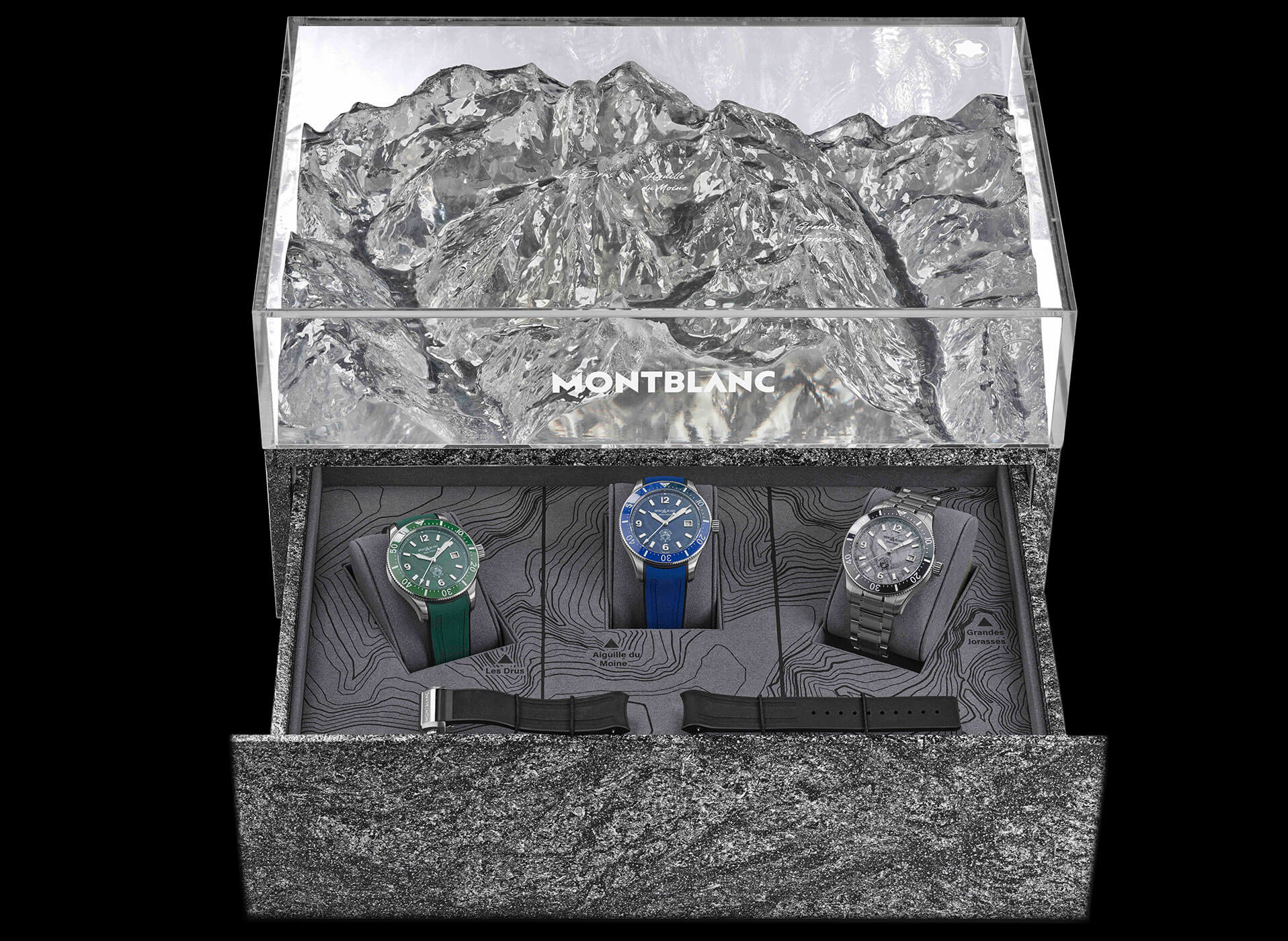
A perfect product – and what comes next?
Aside from Lecamp’s incredible attention to detail, another fact is also rather striking: brands tend to improve new watches in small steps to create a perfect, iconic product over the years and thus sell more over time. Or, to put it the other way around: innovations are spread over several generations. How is Lecamp responding to the incredible success of its Iced Sea series? The watches already seem perfect. Lecamp refers to the future: ‘In the future, new watches will permanently remain in Montblanc’s collection and we won’t change them every few years. Customers want to see their watch at their retailer from time to time. It’s no good if your own model is taken out of the collection, as customers then draw the conclusion that it was a flop.’
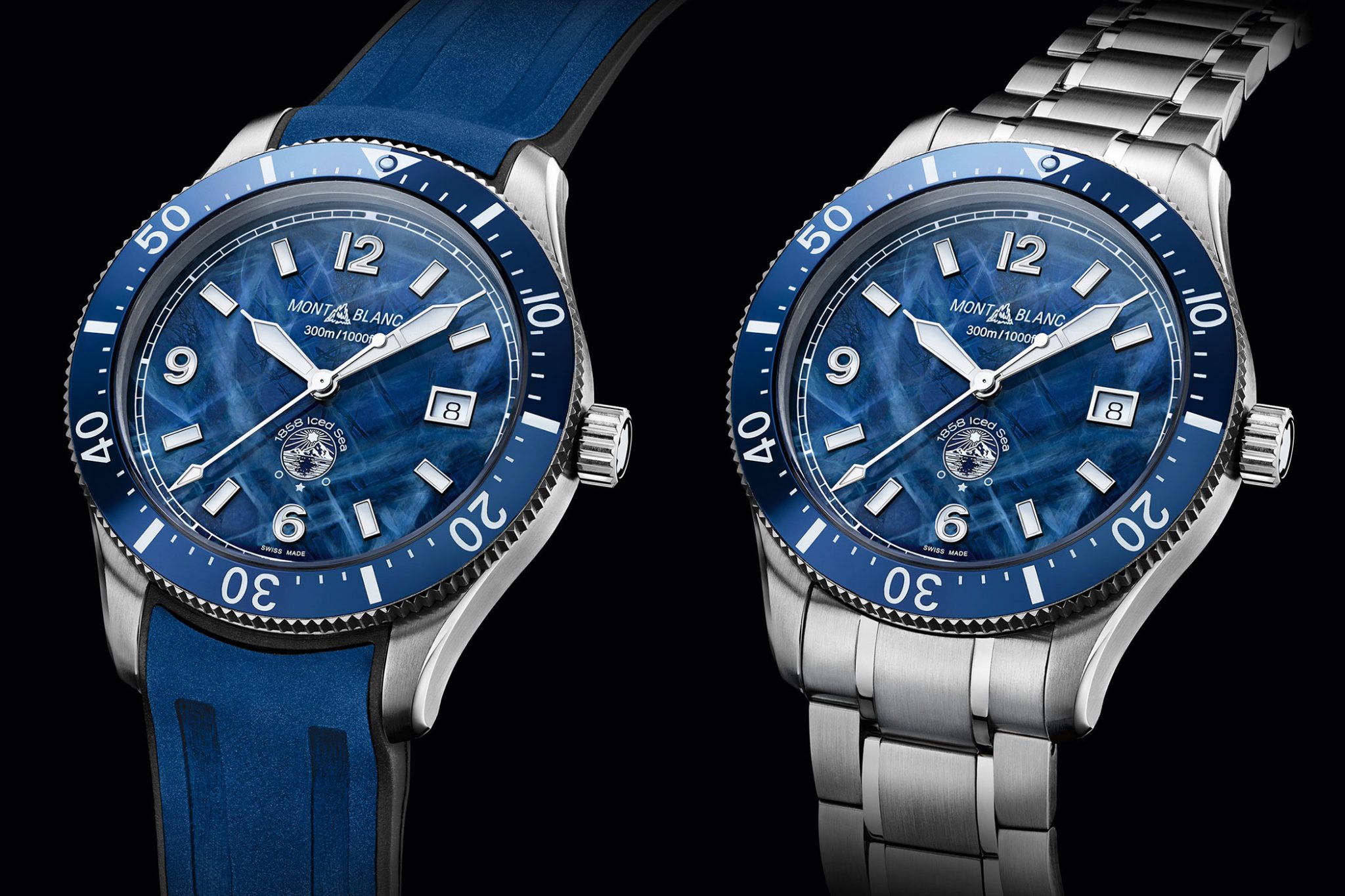
Lecamp wants to outdo himself in 2024
Of course, Lecamp does not reveal what he plans to present at Watches & Wonders 2024, but he does disclose this much – ‘I’ll just give you a small indication of what we’re doing right now: Mont Blanc is 4,810 metres high. That’s a figure that you could definitely play with when thinking about diver’s watches, don’t you think?’
He smiles knowingly and adds, ‘If you have reached all the industry benchmarks, then you have to set a new benchmark for yourself as a watch company. It’s as simple as that.’
Montblanc Geosphere 1858 Southpole Edition
With news about the Montblanc Geosphere 1858 Southpole Edition, Lecamp wants to set a new benchmark in November and December. It is easy to explain why Lecamp now wants to conquer Antarctica with Montblanc as well: ‘In 1989 and 1990, Reinhold Messner was the first person to cross the South Pole on foot and, together with Arwed Fuchs, he covered 2,800 kilometres from coast to coast on skis.’ Montblanc is dedicating a special edition of the Geosphere to this occasion. With a complication developed by Minerva, it is the only watch in the world displaying the rotating northern and southern hemispheres on its dial. If you take a closer look at the globe of the southern hemisphere, where the South Pole is located on this model, you can see a small line. Lecamp notes, ‘That’s the 2,800 kilometres Messner and Fuchs have travelled.’
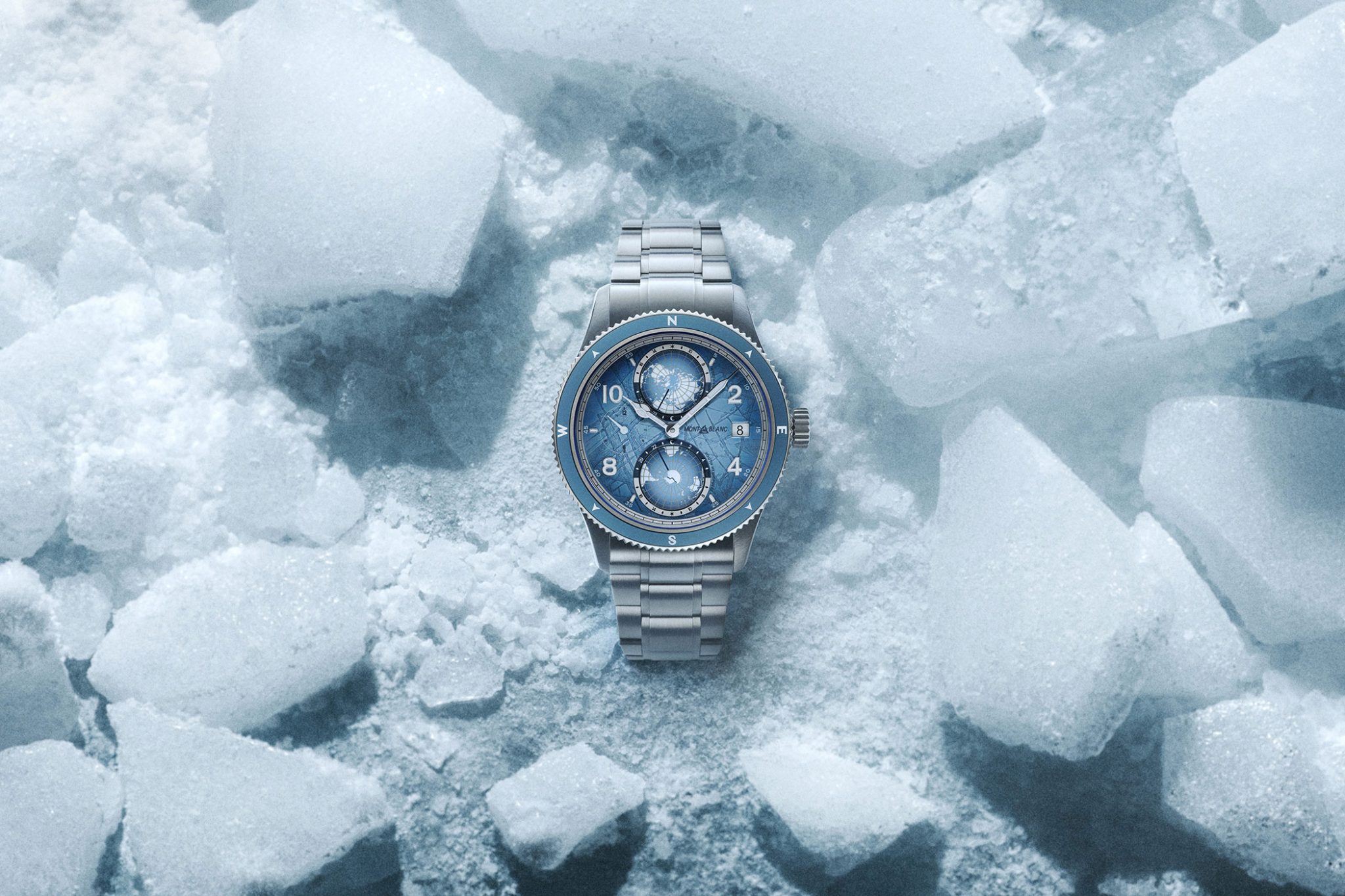
Another stunning effect can be found on the back of the watch with a new, admittedly spectacular, laser engraving. Lecamp comments, ‘We have imitated real South Polar lights through the oxidised titanium. ’It looks true to life, almost like the lights must have appeared to Reinhold Messner and Arwed Fuchs at the time, which gave Lecamp this new idea. ‘We spent eight months trying to make it perfect.’
Caseback with aurora australis
On the caseback, Montblanc celebrates the beauty of the South Pole with an engraving of the aurora australis over Paradise Bay in Antarctica. While it is famous for its emperor penguins and whales, it is also recognised as one of the coldest and windiest places on Earth.
Aurora australis, also known as the Southern Lights, is a spectacular display of coloured bands of light in the night sky. This natural phenomenon occurs when electrically charged particles from the sun collide with gas particles in the Earth’s atmosphere, causing the gases to emit light.
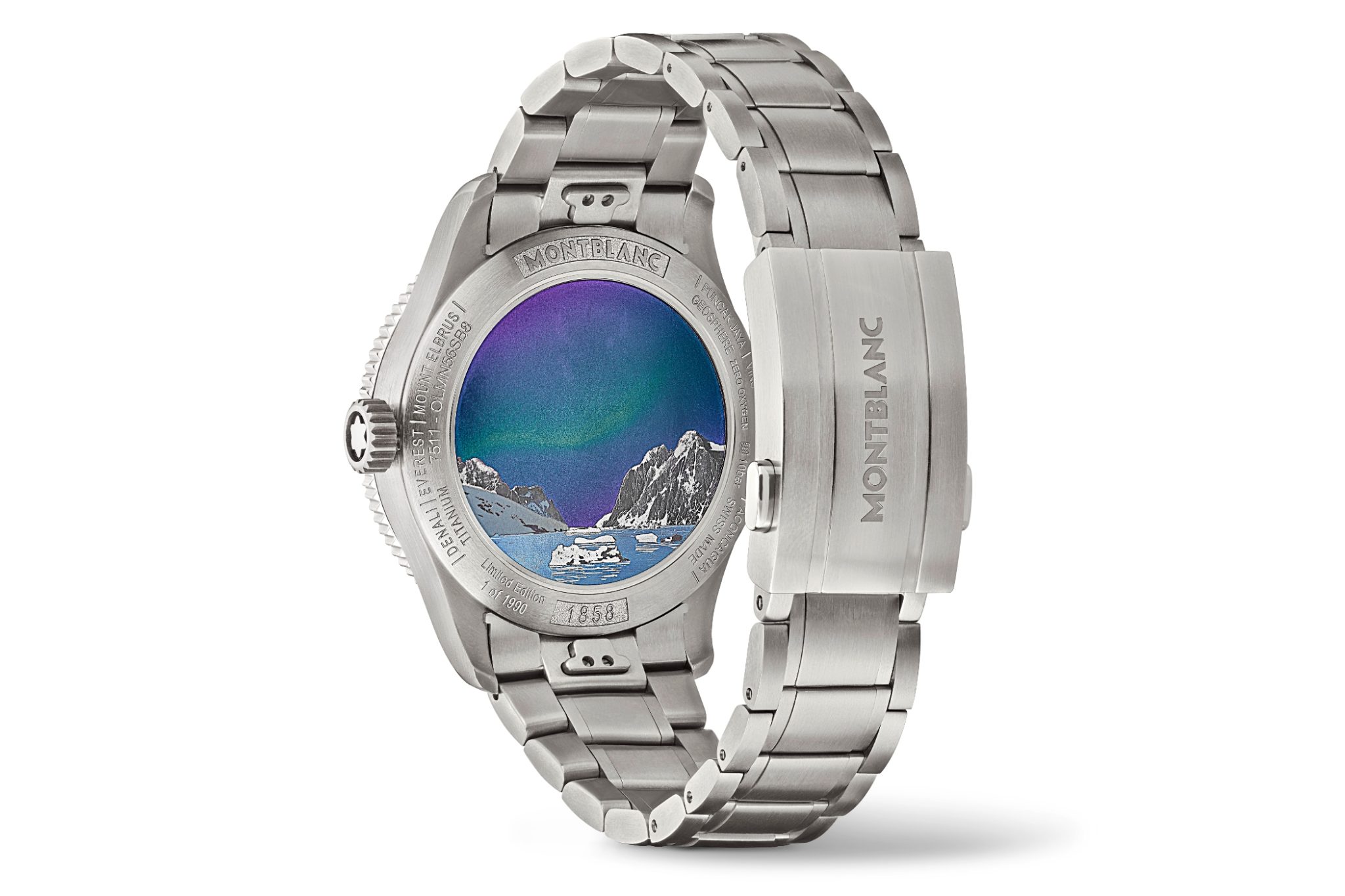
Light blue: The colour of glacier ice without oxygen inclusions
The glacial ice in the Antarctic differs from regular white ice because its age, density, and weight have expelled almost all the air bubbles inside. This means that it absorbs nearly all colours of the spectrum. Thanks to the absence of oxygen, blue is the only colour that refracts. It is precisely this shade of blue that has been conveyed on the dial of the Montblanc 1858 Geosphere Zero Oxygen South Pole Exploration Limited Edition, using the gratté boisé technique mentioned above. An ice-blue, bidirectional rotating bezel made of anodised aluminium with cardinal points set in luminous material provides an orientation to the adventurers.
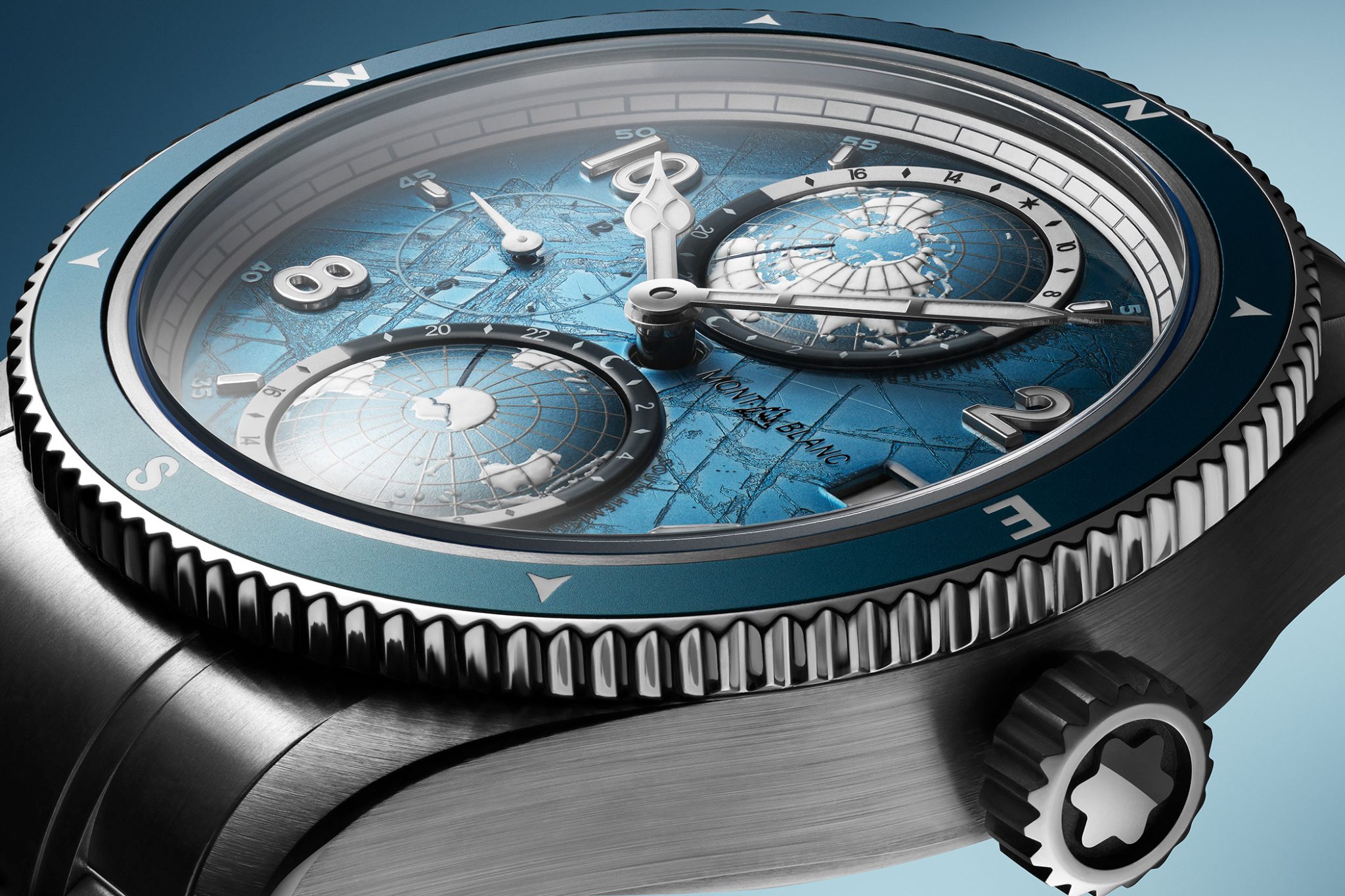
A titanium bracelet
This all-titanium model comes with two straps. In addition to the textile strap, the world’s first titanium bracelet with the same technical features as the Iced Sea bracelets, i.e. with a quick-release fastener and fine adjustment over nine millimetres, is provided. The Montblanc 1858 Geosphere Zero Oxygen South Pole Exploration is limited to 1990 pieces – even though hardly anyone would want to go diving there. Or maybe Lecamp is crazy enough?
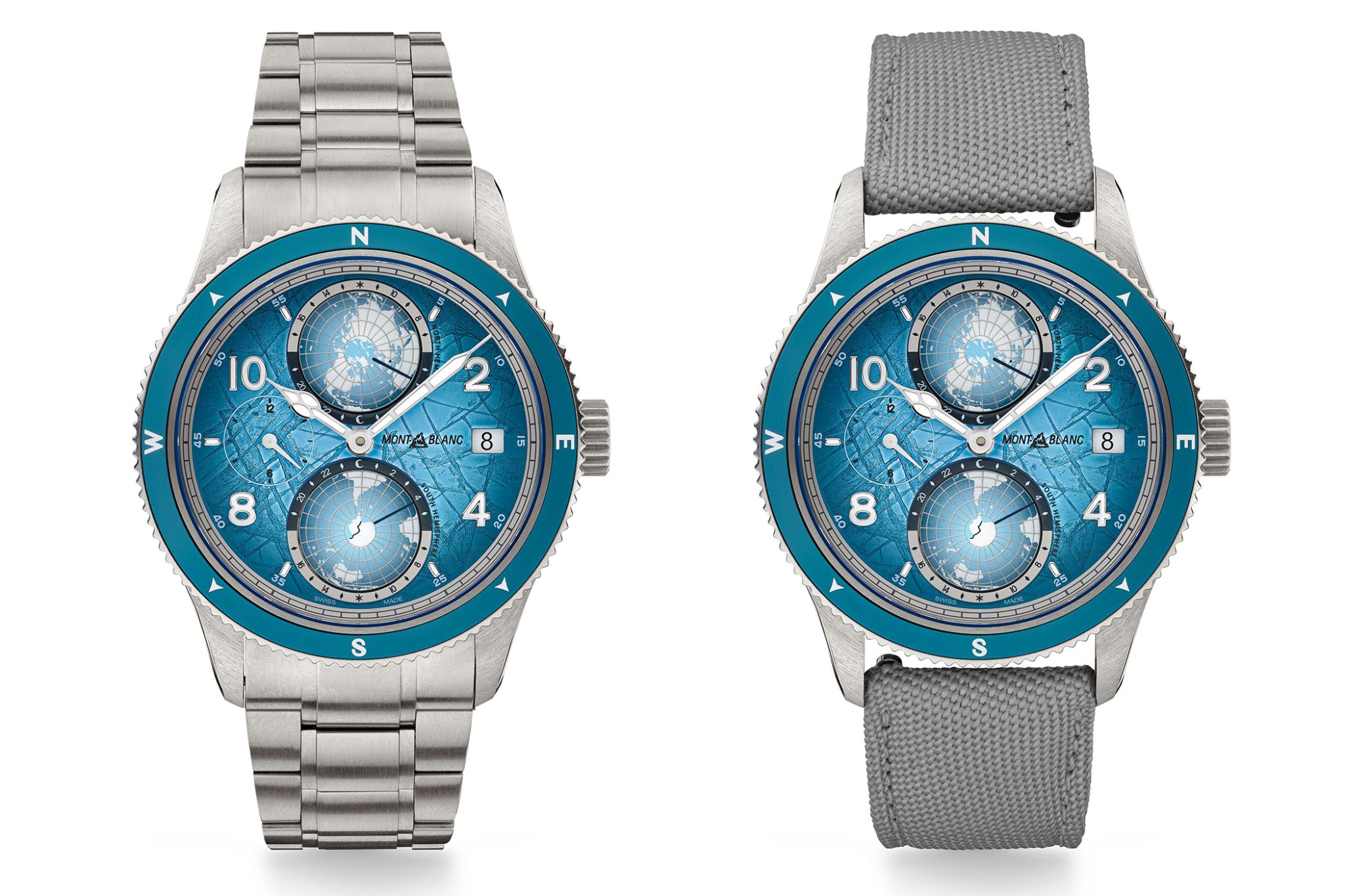
Running a marathon at the South Pole with Simon Messner
To mark the launch of the watch, endurance athlete Laurent Lecamp has come up with something special. In December, he will run a marathon with Simon Messner, the son of the brand ambassador and mountaineer, who is also an extreme athlete. Simon Messner is regarded as one of the best mountaineers in the world, but he avoids the public eye. Simon studied molecular biology and is a passionate mountaineer. At 15, he discovered his passion for the mountains while climbing the Dolomites. He has already conquered numerous rock and ice routes and made first ascents in Oman, Jordan, Pakistan, the Alps, and his homemountains, the Dolomites. He climbs in alpine style, i.e. without external help or Sherpas. Lecamp says, ‘Simon is incredible. He just found another new route in the Karakoram at 7,000 metres this summer.’ The accomplished athlete was born in 1990 – the same year his father, the mountaineer Reinhold Messner, crossed the South Pole.
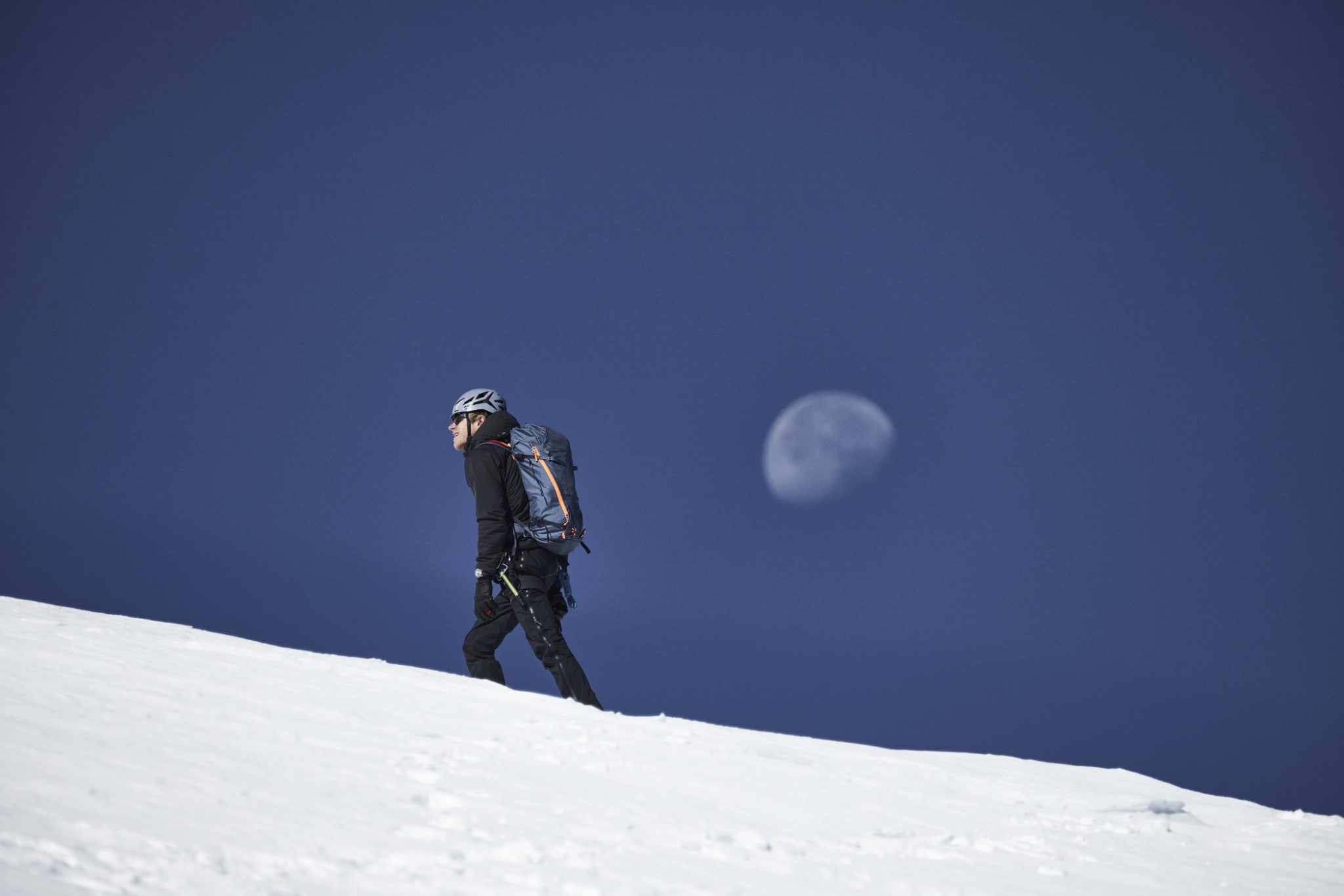
Needless to say, the two are not just running any marathon but one in Antarctica. Yes, you read that right. On 13 December 2023, Montblanc will accompany Simon Messner on an adventure through the glacial landscapes at the Antarctic Ice Marathon. The marathon starts at an altitude of 700 metres at the foot of the Ellsworth Mountains, just a few hundred miles from the South Pole – with snowy and icy ground conditions and temperatures of around minus 20 degrees. In addition, strong katabatic winds can be expected in this area, further increasing the difficulty level.
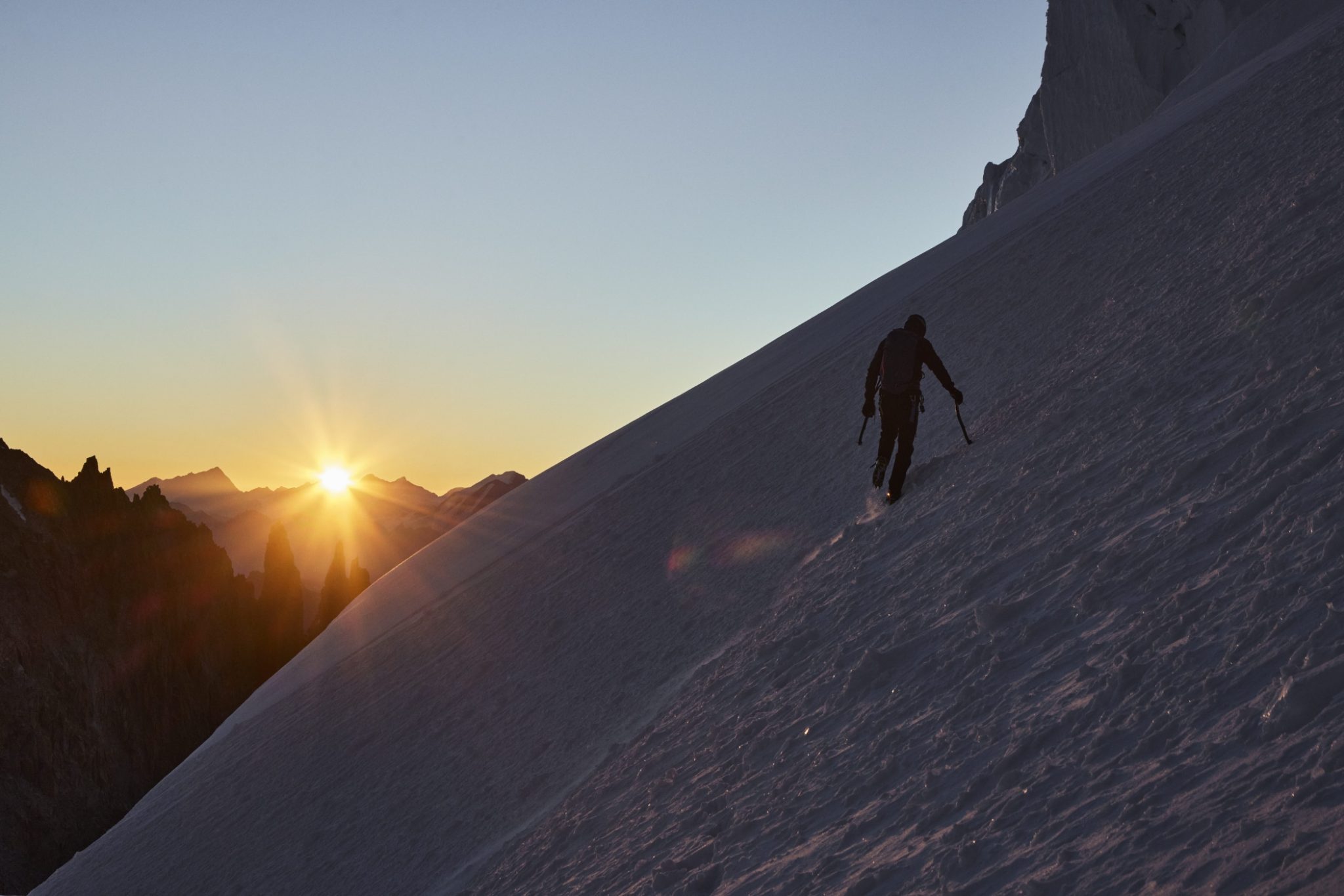
Lecamp’s dream: participating in the world’s coldest marathons
The extremes to which Laurent Lecamp goes only become clear when you ask him about his hobbies. Lecamp replies, ‘I have a dream and it is to run the three coldest marathons in the world.’ He has already completed the first one at Lake Baikal. Lecamp recounts, ‘It was minus 42 degrees. 80 percent of the runners had black frostbite on their faces. I’ve never seen anything like it.’ He says he was lucky because he had developed the perfect face protection with a company from Switzerland. Therefore, Lecamp is not excited for the climatic conditions or because of his running time (after all, he completed the Baikal Marathon in 4 hours and 8 minutes), but for his watch: ‘I’m very excited because Mr. Messner will run with the new Geosphere South Pole on his wrist.’

How Laurent Lecamp wants to tie Montblanc more closely to Minerva
There does not seem to be any need to worry about Montblanc’s future products or Laurent Lecamp’s fitness. But what about the products from Minerva, the manufacture that works at a quality level equal to Jaeger-LeCoultre or Patek Philippe? Lecamp is confident: ‘Our collectors fully stand behind Minerva. And the interesting thing is that 80 percent of the collectors we have at Minerva also wear the Iced Sea. Because every time they come to Villeret, we also introduce them to new concepts from Montblanc, such as the Iced Sea, the Nicolas Rieussec, or Zero Oxygen models.’ For him, this clearly showed that these people started to associate Minerva and Montblanc watches in their heads.

Montblanc Star Legacy Exo Tourbillon Skeleton The Ascent – LE 8
The first interaction between the two brands resulted in an exceptional watch: In memory of the first ascent of the highest mountain in Europe, which adorns the company logo, Montblanc is honouring this historic moment with the Montblanc Star Legacy Suspended Exo Tourbillon Skeleton The Ascent, limited to eight pieces. Lecamp recounts, ‘On August 8, 1786, at 6:23 p.m., Jacques Balmat, an ambitious young hunter and gold prospector, with the support of Michel-Gabriel Paccard, a doctor with a passion for plants and minerals, reached the summit and made mountaineering history – a whole century before the word ‘alpinist’ entered dictionaries.’
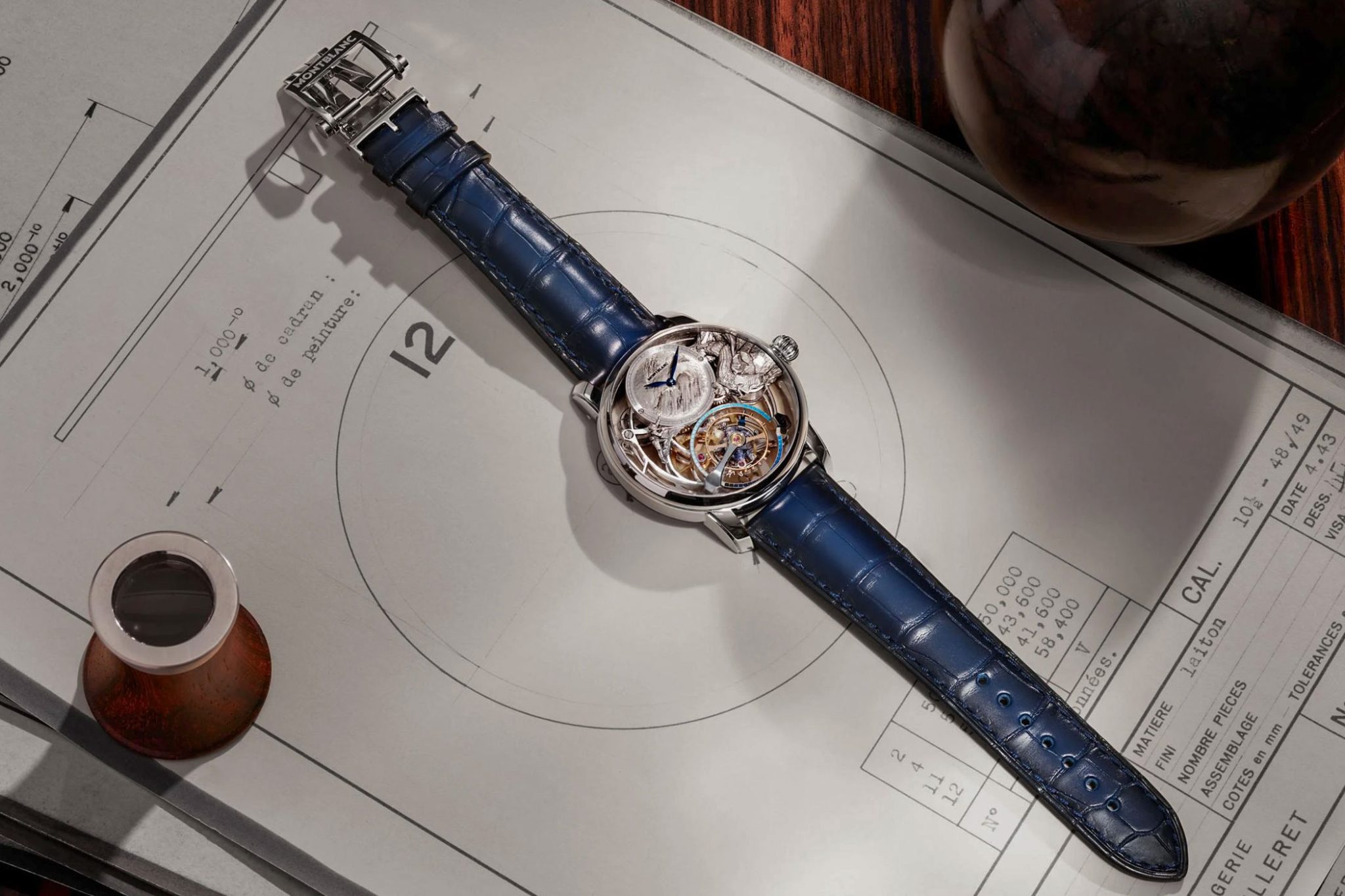
Each piece of the Star Legacy features a small dial with a hand-engraved summit of Mont Blanc at 12 o’clock. To the left of the silvery white peak there is an engraving made of 750 white gold that shows Balmat climbing to the summit. The right side is adorned with a lindworm, a dragon-like creature that, according to the legend illustrated in old books, lived on the Mer de Glace glacier.
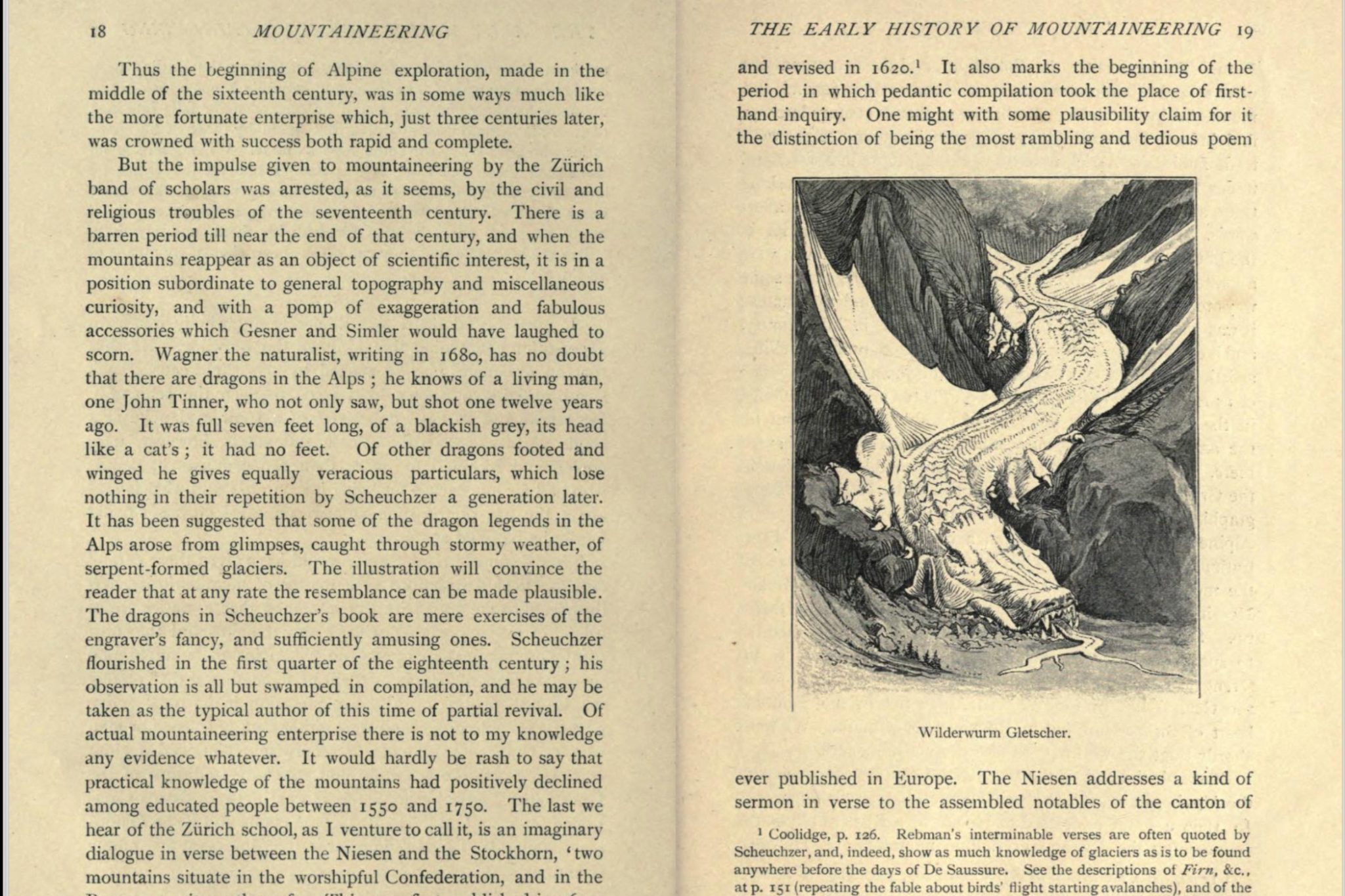
A collector’s club with 58 members and a new movement every three years
It is a breathtaking watch but also extremely limited, as there are only eight pieces. We want to know how Lecamp keeps his other 292 Minerva customers happy. He responds, ‘We founded a club for our best 58 customers. Its members come from 23 different nationalities.’ What initially sounds rather normal for such a niche manufacturing brand has an extraordinary appeal for its members, as Lecamp explains, ‘The club members are offered an exclusive watch every three years.’ Yes, that’s right. Lecamp develops 58 movements just for these customers and adds, ‘Don’t get me wrong. These watches are not based on existing calibers, but we develop a completely new movement every three years. The models are also below Minerva’s average price to show members that we don’t want to make money with them and so that they can see that we really value working with them.’ Lecamp only reveals this much: The first model features a 24-hour display. When asked where we could see these watches, Lecamp shrugs, ‘People could post them on Instagram, but they don’t. These people love to remain unrecognised.’ It goes without saying that Montblanc does not communicate any information regarding these watches.
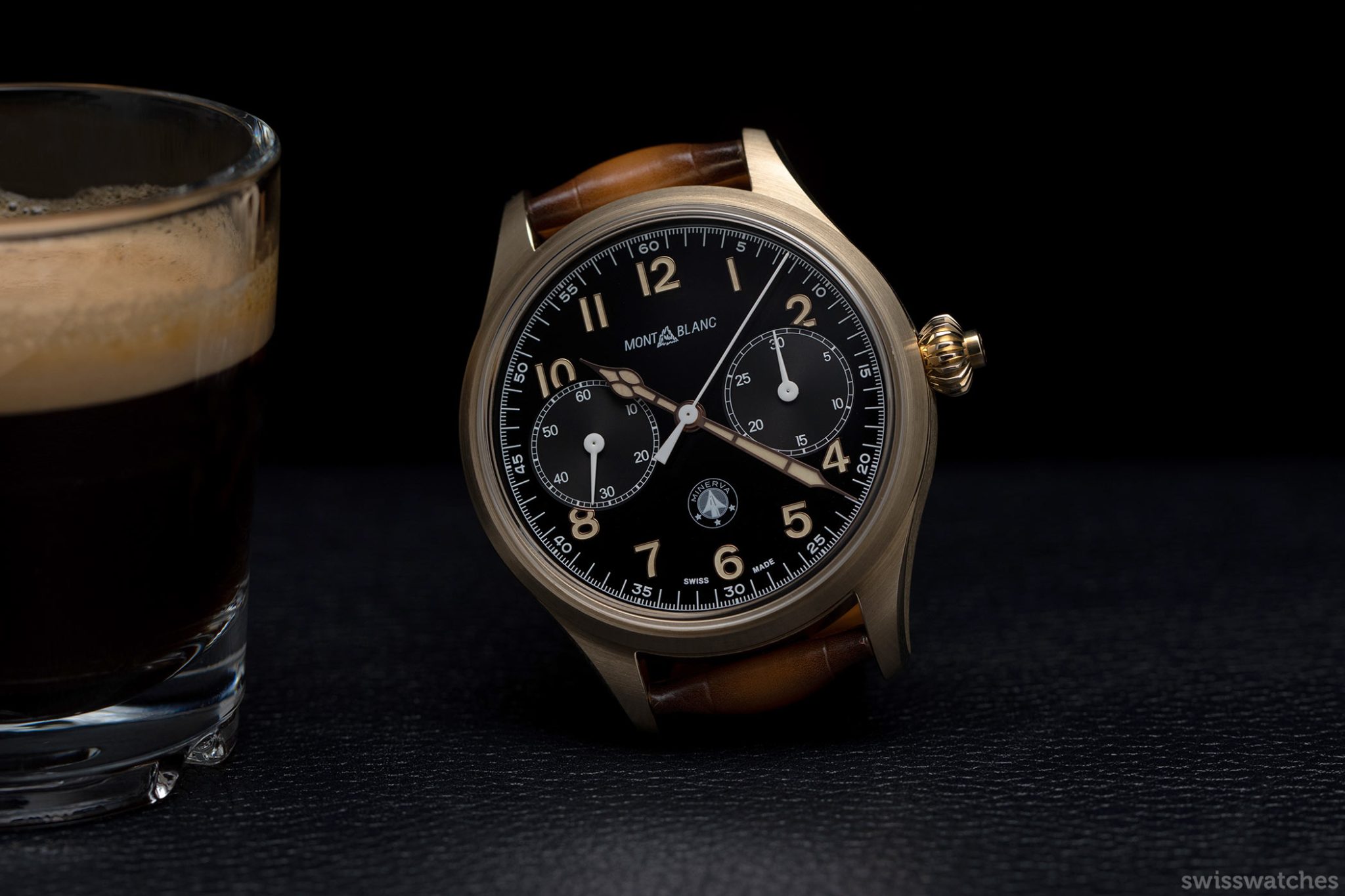
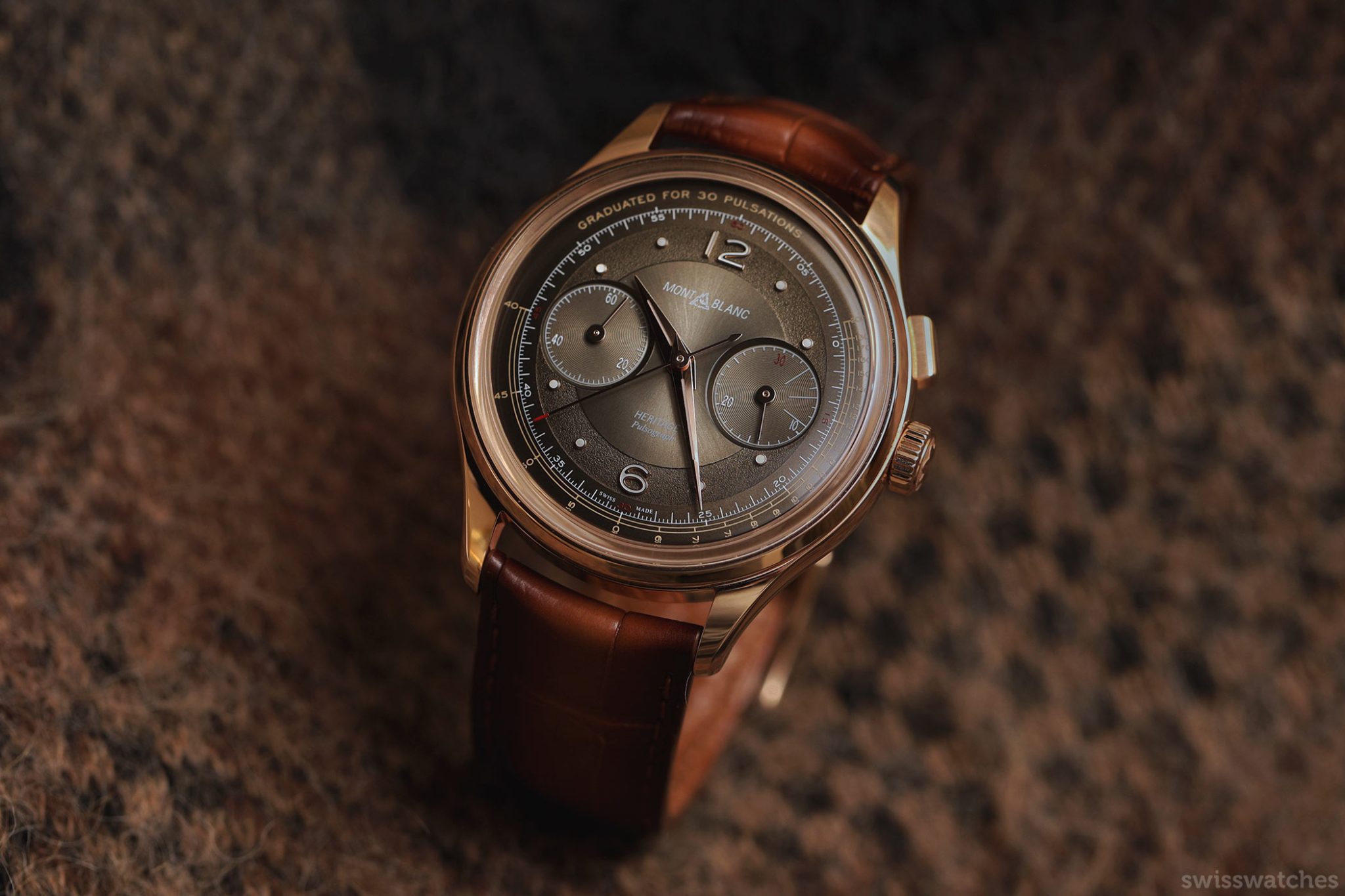

A club to say thank you
How does Montblanc select the members of its club? Lecamp explains Montblanc’s intentions, ‘We first wanted to thank these collectors.’ Because when he joined the company, his first question to his team was, ‘How do you thank the people who buy our watches?’ And when he did not receive an answer, he opted for the club. Lecamp also pays particular attention to every little detail of the club watches. For example, club members only get watch straps with one hole – no fine adjustment is needed. Lecamp adds, ‘We tailor the watches to your needs.’ Of course, in the future, every Minerva customer will be able to meet and get to know the watchmaker who assembled their watch – something that does not exist in the watch industry because this does not just apply to the customers of the exclusive Club 58.
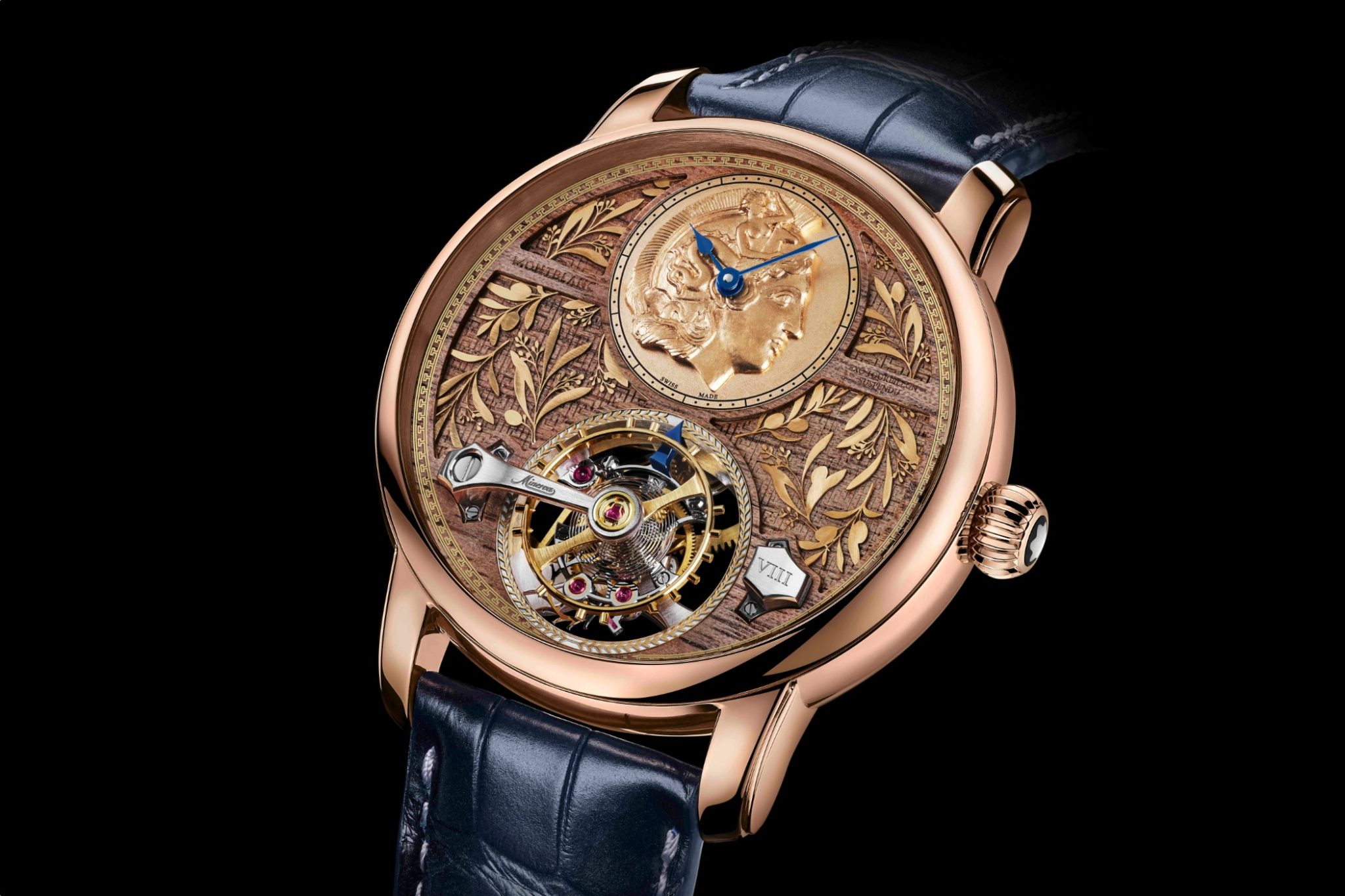
As we say goodbye to the man behind Montblanc’s watches, he has a question of his own for Swisswatches: ‘Do you remember when the Montblanc logo with the bird’s eye view of glaciers was invented?’ ‘It was in 1913, of course.’ ‘Guess at what height the sea of ice, the mer de glace glacier on Mont Blanc, begins.’ ‘1913 meters?’ We both laugh, and yet Lecamp is very serious about this coincidence. Obviously, there is no need to worry about fitting stories for future Montblanc watches. As we part, we wish Lecamp a successful run at the marathon in Antarctica, and, with all of his creativity, we are already looking forward to the new Watches & Wonders products next year.
